|
Recently, I've been on a mission to optimize my grab-and-go setup. Slowly but surely, parks that offered dark corners for a telescope have been saturated with bright lights: the kind that needlessly waste energy, confuse nocturnal animals, and pollute the night sky. I have to walk further than I have before, or settle for less than ideal observing conditions. To that end, setups that used to feel perfectly mobile now are discouragingly cumbersome to use. I admit I was tempted to swap my FC-100DZ for a lighter telescope, such as the FC-100DC I used to have and love. Then I had an epiphany - one I should have had long ago. With its diagonal removed and dew shield retracted, the DZ is just over two feet long. Couldn't I find a padded bag that long? If so, the DZ would be as easy to transport as my dearly departed TV 85, while offering considerably better performance. I found the bag - for just $23! - and wow: what a difference. It's strange but true: the DZ is as transportable as much smaller telescopes, but offers truly stunning views of everything that shines through light-polluted skies. The other night, I pointed it at Saturn, which is just now reaching opposition (its closest annual approach to Earth). The view was spellbinding, with glimpses of detail in the planet's clouds that were among the finest I've seen. On the other hand, DC's summer mosquitoes did not give me a moment's rest, and I was grateful that my little setup takes just a few minutes to disassemble. Then, last weekend, it was off for what has become an annual trip to the beach near Lewes, Delaware. I brought my EVScope 2, eagerly anticipating darker skies. Unfortunately, I soon found that atmospheric transparency was lower near the beach than it has been in years past - owing, once again, to that wildfire smoke. Worse, my recent experience with a truly pristine sky in Manitoba left me unimpressed with the view in Delaware. Sure, the Milky Way was barely, and I mean just barely, visible after fifteen minutes outside in the dark. But there was simply no comparison. I occasionally fantasize about selling my EVScope in exchange for a more capable astrophotography setup. The three (!) clear nights I experienced in Lewes reminded me why I have that fantasy - and why I haven't acted on it yet. First, the telescope needed collimation. If you've read any reviews of the EVScope, you'll know that some complain about the need to collimate such an expensive gizmo. Let me assure you that it's much easier than collimating an SCT, for example. Even when the telescope is badly misaligned - as it was for me in Lewes - the entire process takes a few minutes at most. The real problem is that Unistellar's instructions include a glaring error. To collimate the telescope, it should not be pointed at a particularly bright star - I tried Antares - because the star's brilliance will not allow you to see the secondary mirror when out of focus. I suppose it's a minor detail, but this little mistake can create a lot of frustration. Usually, it takes just moments to align the EVScope and get it ready to slew to any object you can imagine. Usually. On one night in Lewes, I had to turn off the telescope a couple times before it aligned itself. On two other nights, it did not precisely center objects after finding them - so that, at the telescope's highest magnifications, objects were simply offscreen. On a third night, everything worked seamlessly. I carefully leveled the telescope, collimated it, and waited over thirty minutes for it to acclimate. That may not sound arduous to veteran amateur astronomers - but it's hardly ideal for a grab-and-go setup. When the telescope is aligned, it tracks objects seamlessly. The trouble is that its altazimuth mount cannot perfectly track stars on long exposures. This isn't visible while peering into the eyepiece, but it does show up clearly in astrophotographs taken with the telescope. Since most people will use the telescope by staring at their phones or tablets - in fact, some Unistellar models don't even have eyepieces - this is a serious limitation. Even this six-minute exposure of the Eagle Nebula has distorted stars. Stars are also distorted - even through the eyepiece - because stars shimmer in all but the steadiest atmospheric conditions. When using a traditional telescope - especially a refractor - you may see a roving, flickering pinpoint. Yet the EVScope takes exposures to provide its bright views of deep space objects, and in these exposures the undulating pinpoints that are stars in mediocre seeing all congeal into blurry blobs. For a refractor aficionado like myself, the effect is deeply unsatisfying. To me, it really does not feel like you are actually peering into space when you use an EVScope. Occasionally I wonder: what am I getting here that I could not obtain by finding images on the internet? Have a look at this shot of the Wild Duck Cluster, for example. The problem is compounded by the reality that Unistellar's software cannot quite compensate for the effects of light pollution. Overall, it does a remarkable job - I'm still amazed that I can admire the Triangulum Galaxy from downtown DC, for example - but there's still a good deal of noise even under a Bortle 4 or 4.5 sky (as in Lewes). Have a look at this 24-minute exposure of the Pinwheel Galaxy, and notice the noise. Another inconvenient truth is that, even with the galactic core above the horizon in the summer, there just aren't that many objects that truly impress when viewed with the EVScope. You have to remember that although the EVScope allows you to view galaxies and nebulae that are far beyond the reach of a comparably-sized traditional telescope, it is also incapable of providing satisfactory views of many objects that such a telescope would reveal. Open clusters, double stars, the Moon, and the planets: everything that impresses when seen through a telescope like the Takahashi FC-100DZ is underwhelming at best when viewed with the EVScope. In practice, dozens of objects in the EVScope's catalogue look like this, and hundreds are far less impressive. The EVScope also seems to have a weak wifi signal. Walk twenty feet away, and you're likely to lose it. You can forget about sitting indoors while operating the telescope. That's too bad, because mosquitoes really can make it hard to stay outside in our muggy summers. In other places, winters are just too cold for comfortable observing. Wouldn't it be easy for Unistellar to include some way of amplifying the wifi signal on its $5,000 device? So yes, I was getting a little annoyed in Lewes. I kept imagining what my TEC 140 might reveal; not nebulae in a distant galaxy, sure, but pinpoint stars on a velvety black background, and spectacular planetary views. This is the best that the EVScope can do on Jupiter, even after a recent software update that dramatically improves planetary performance. I admit: I could go on. Suffice it to say that my nights in Lewes reminded me that, if you buy an EVScope, you really should go for the EVScope 2. This is because the eyepiece is really a lot better than some reviews suggest. Somehow, images of nebulae and galaxies are much brighter and sharper through the eyepiece than they appear to be when viewed on a phone or tablet. The distortions I complained about above - those blurred stars, in particular - are also minimized when viewed through the eyepiece, likely because the small scale of the image mitigates them. As a result, I am consistently impressed by the nebulae and galaxies I see through the eyepiece; so impressed that I take an image that then disappoints. Just before I took the image of the Pinwheel Galaxy that you've already seen, I invited my wife and our friend outside to have a look. Both are astronomy novices, to put it mildly. Both seemed skeptical that they'd see much. Yet when both craned over the EVScope eyepiece, they gasped. They could not believe that they had seen a whole galaxy across 20 million years in time and space. They kept saying how cool it was. "It's almost like one of those picture slide viewers," my friend eventually said. Indeed. You see so much more - and so much less - than you would with an ordinary telescope. That is why I think I'll keep the EVScope . . . for now. Here are some extra images, showing medium-length exposures of some of the best-known sights in the summer sky.
0 Comments
Two things have kept me from posting - and observing - these last three months. First: the weather. This has been about the worst stretch of cloudiness and terrible seeing that I can remember in DC. On the rare nights that seemed promising, conditions worsened just as I was about to step outside with my gear. I remember a similar though slightly less atrocious stretch of bad weather last year at around this time, when I was so impatient to see whether my new Takahashi FC-100DZ really provided better views than the Takahashi FC-100DC I had just sold. Now I wonder: is this the start of a new trend, or perhaps a regression to a mean that existed before I started observing whenever I could? But second, I bought a home. That turned out to require a lot of work - more than enough to keep me in, even if the nights had been clear. The new place is a condo with a fenced-in backyard. A backyard! It's what I've always dreamed of. Okay, it's small, and it's mostly for the kids. But when my wife saw the yard for the first time, she reported a gap between the trees that "might be good for your telescopes." My heart skipped a beat. Can you ask for anything more from a partner? We moved in just two weeks ago. It's been quite cloudy since, but then, last night, the clouds parted, and the forecast called for better than average seeing and transparency. So I woke up at 4 AM, ready to go. I didn't have to go far: whereas I've long had to walk for ten or fifteen minutes to reach a nearby(ish) park, now I just step out the back door. What a thrill! Admittedly, the backyard affords only pockets of open sky, nearly all of them facing east-southeast. When the overhanging trees sprout their leaves this spring, most of those pockets will fill up. For now, however, I was thrilled to see Ursa Major, Hercules, and Lyra all hanging overhead. There are some streetlights nearby, but they're not blinding and their light points down at the ground. For a condo backyard, you can't ask for much more. I slipped outside with my EVScope 2. That's right: I've upgraded from my first-generation model. The sequel has a higher-resolution sensor that shows more of the sky, along with a much-upgraded eyepiece. Those were exactly the upgrades that I've yearned for, so when I heard about them I had to pounce. The EVScope 2, however, is not exactly cheap. I bought it at about $1000 more than the original, which of course I had to sell to make the purchase remotely possible. When I stepped outside, it was -7 degrees Celsius - that's about 19 degrees Fahrenheit. To cover the approximately 30 degree (Celsius) delta between inside and outside temperatures, the EVScope required a good thirty minutes to acclimate. When I tried to capture an image before it had cooled down, it was predictably blurry and unsatisfying. But after the telescope had reached ambient temperature, the view was rock-steady. The EVScope 2 seems to align itself even more easily than the original. It honestly takes no more than ten seconds or so, and then it's ready to slew anywhere in the night sky. Objects also appear more consistently centered in my view after the telescope finds them. I'm not sure what accounts for this; is there really something about the EVScope 2 that could be responsible for it? I'm not sure. Maybe I was unlucky with my first unit. But the improvement sure is handy. M51 - the Whirlpool Galaxy - is always a favorite target. Last night it was a little close to the balconies above us, which required me to reposition and realign the telescope a few times to get a decent angle. Then, in just six minutes, I got the above picture. I think it's about as good as the image I got in Lewes, Delaware last summer, with the EVScope 1 under far darker skies. I think the new version handles light pollution far better than the original; certainly it seems to take far longer exposures before the image starts brightening around its edges. The amount of detail on M51 is really extraordinary when you consider it took just a few minutes to get that shot in a light polluted, Bortle 7-8 sky. As readers of this site will know, I get such a kick out of M57, the Ring Nebula. With a four-inch refractor in DC it is just barely - barely - there, and then only with averted vision. A larger refractor shows more, but not much. The EVScope, of course, makes it so obvious, and so colorful, in just a few minutes. The EVScope 2 provides meaningfully less grainy images; the nebula looks smoother here, and much more true to life. As the eastern sky showed its first signs of brightening, I turned to M13, the Hercules Cluster, to close out the night. There's just something about a globular cluster that is always such a thrill for me, and of course the great Hercules cluster most of all. This view did not disappoint: easily the rival, I thought, of what the EVScope 1 revealed under far darker skies. The EVScope 2 seems to more consistently permit longer exposures; I found that my phone frequently lost its connection to the EVScope 1 when my exposures passed ten minutes or so. Maybe that was just my unit, but still: it was nice to easily cruise on to 12 minutes on an object like M13.
I kept slipping back inside to warm my fingers as the telescope started taking exposures. That's one wonderfully convenient luxury of a backyard. Still, I didn't lose that early morning magic, when all seems still, even in the heart of a city - breathless with anticipation for the rising Sun. There's just nothing quite like that feeling of being outside with a telescope in the hours before dawn, gazing millions of years back in time and space. It's been boiling hot and cloudy at night through much of July and August in DC, but this week we escaped to the Atlantic coast. I asked my five-year-old daughter which telescope I should bring, and though Jupiter amd Saturn are high and bright right now she was adamant: the one that would give the best views of nebulae and galaxies. Though I was tempted to bring my TEC 140, the EVScope was the clear choice. I set up the little telescope beneath skies in Lewes, Delaware, that were just about dark enough to reveal the Milky Way. Seeing was really good and transparency was about mediocre. While lying on a hammock in the sun room, I controlled the EVScope and slewed it from one target to another, checking its progress on my phone. You just can't beat that convenience. When there's a lot of light pollution - as in DC - I quickly notice a brightening at the edges of the screen when taking EVScope exposures that are more than a few minutes long. No such trouble here in Lewes, where the light pollution is not comparable to what it's like in DC. I realized things were different right away, with this exposure of the Whirlpool Galaxy. I've written this before, but wow what a thrill to set up a suitcase-sized telescope and, within minutes, observe nebulae in a galaxy 30 million light years away! The more I use the EVScope, the more I find myself thinking that telescopes like it represent a huge part of the future of amateur astronomy. Light pollution is unlikely to get much better any time soon, and attempts to reduce future warming by increasing the opacity of the atmosphere are becoming increasingly plausible (this is known as solar geoengineering). Electronically assisted astronomy (EAA) will help observers overcome these obstacles - while giving them views of the distant universe that simply can't be matched with traditional optics (at least not in a portable package). The technology will only get better, and I can imagine telescopes that can switch seamlessly between modes ideal for Solar System and deep space object observation. While the EVScope can deliver impressive views within the biggest cities, it dawned on me last night that it really comes into its own under darker skies. Perhaps it's no surprise that even EAA follows the same principle as traditional astronomy: the darker the sky, the better the view. The EVScope only reduces - enormously - the usually extreme difference between dark-sky and polluted-sky observing. For example, I've been trying to get a good shot of the Dumbbell Nebula for the longest time in Washington, DC, but whenever I tried I ended up with little more than a disappointing blob. But just look at the view after just 10 minutes in Lewes. To me, the level of detail and color is nothing short of phenomenal. And what a thought: the Dumbbell Nebula is illuminated gas released by a red giant star before its collapse into a white dwarf (in this case, the largest white dwarf known to astronomers). This is what our Solar System could look like in six billion years or so. So yes: when it comes to the EVScope, it's hard to beat the views. And it fits in a tiny corner of my car's trunk, tripod and all!
I've written it before, but wow: Washington, DC is such a feast or famine city for amateur astronomy. We've had bad seeing on just about every clear night (and there haven't been many) for around five months now. At last, this month, the clouds parted - but on night after night, the seeing remained poor at best. I took out the Takahashi FC-100DZ twice, and both times found the seeing well below average. Both times the Moon failed to impress as it otherwise might, and stars shimmered and danced in the eyepiece. Mars had long since set; I won't have another good look at the planet until 2022. At last, at 4:30 AM on Wednesday morning I stepped out with my EVScope and found the seeing to be . . . okay? It was windy near the ground, to my great frustration, but the stars scarcely twinkled and the internet confirmed it: seeing, it seemed, was about average. Of course that doesn't matter as much as transparency when you want to observe most deep space objects, but transparency was average, too. The sky, in other words, was about as good as it's gotten since autumn. It was a little cold, however, and muddy where I set up in the park. I hoped to test the EVscope on the Ring Nebula and the Hercules cluster: two objects I admired last year with my refractors. The scope aligned itself within seconds - why can't other mounts do this? - and I soon found it to be in perfect collimation. Moments later, it had found the Ring Nebula and I began a short exposure. As I wrote last year, under urban skies the Ring Nebula looks like a ghostly grey ring with a fine four-inch refractor - a ring you can just, just make out with direct vision. Using the APM 140 with averted vision, the ring was plainly obvious. In darker skies, with a four-inch Takahashi, the ring was equally obvious and appeared a little flattened. Every time I looked, there was a visceral thrill to seeing it, with just a couple lenses between my eye and the nebula. Yet through the eyepiece, the object itself was a subtle pleasure. The experience couldn't be more different with the EVScope. That thrill of seeing something with your own eyes is just about gone. Unlike others, I really don't like looking through the scope's eyepiece; it's like looking down a barrel, for one, and at the bottom of that barrel it's clear that you're seeing a screen. Maybe I've been spoiled by fine refractors and fine eyepieces, but it's a letdown. So I look at my phone, and for the most part I wait. The experience of observing - of learning how to see - is completely lost with the EVScope. Yet the thrill of seeing deep space objects otherwise barely visible from the city beginning to resemble their true selves is simply something you can't get with a traditional telescope under an urban sky. This time I really was floored when the nebula almost immediately turned green on my screen, and then when its perimeter began to seem orange, and then when its interior started to take on a greenish hue. The breeze pushed on the tube just enough to blur some of the stars, but what a wonder. Observing the Hercules cluster was a slightly different story. The cluster is always a highlight for me, not least because it's three times older than Earth - or because we beamed a message there from Arecibo, in 1974. With one of my refractors, it looks like a smudge at first from downtown DC, but after a while the stars come out, like diamond dust on a velvet background. It's subtle - exceptionally so with one of my smaller scopes - but magical nonetheless.
Again, the experience couldn't be more different with the EVScope. Hundreds of stars are easily visible, but of course they're slightly bloated; they lack that crushed gemstone beauty that you get with a fine refractor. Many of the stars are also clearly red, a testament to their age: again, things are visible through the EVScope that just aren't accessible with a regular telescope. Is the view more impressive? Maybe not to an experienced observer, but it's different, and that's a good thing. Some complain that the EVScope delivers the same experience you might get with a much cheaper (and more unwieldy) astrophotography setup. That's just not true. The EVScope is marvelously portable, and I can set it up in about one minute. It needs virtually no time to cool down. It's a joy to use and on most nights there's no fuss at all. In half an hour I can pack up - this takes another minute - having observed at least three deep space wonders as I otherwise never could. The key point is that the EVScope delivers a fundamentally different experience than you'd get with either a traditional telescope or an astrophotography setup - and again, I view that as a very good thing. This weekend, we travelled to the Shenandoah Mountains with our "bubble family" for a much-needed getaway from Washington, DC. It took a little negotiation - even a short trip with kids requires a lot of luggage - but I eventually received authorization to stow a telescope in the trunk. There wasn't much room, so the telescope had to be small, and that left two options: the TV 85 or the Takahashi FC-100DC. I decided I wanted the extra reach of the Takahashi, so I unscrewed its focal extender - shortening and lightening it - and then found a way to make it fit with my lightest tripod. To my delight, our cottage turned out to have two balconies, both isolated from surrounding houses, and was just enough of a clearing in the trees to reveal a part of the night sky. That part, I soon realized, could not have been better placed: it would reveal the Ring Nebula and the Hercules Globular Cluster in the evening, and the Andromeda and Triangulum galaxies in the morning. Even better: the forecast called for clear skies on both nights we were there. What are the odds? On the first night, I stepped directly from my bedroom to the cottage's narrow, second-floor balcony. The air was alive with the squawking of birds and the buzzing of bugs. Luckily I brought plenty of mosquito repellant - although it was hard to forget about the legions of spiders spinning webs just overhead - and wow: what a night sky! Bortle 4, by one classification scheme; yellow or maybe green by another. It was, admittedly, not perfectly dark, but to this city slicker it was nothing short of a revelation. It's been so long since I've seen the Milky Way - but there it was, clearly visible. There were in fact so many stars that it was hard, for a moment, to pick out the constellations! Oh, what I've been missing in DC. To my surprise, Jupiter and Saturn both turned out to be high enough to view from the upstairs balcony. Saturn was beautiful, but I've had better views from the city. Jupiter, by contrast, was so clear and full of contrast - and, lucky me, I had tuned in just on time to see another shadow transit! To think that I'd never seen one before this month. Callisto, it turned out, had just finished traversing the planet, and its shadow was still in the clouds. The shadow seemed a bit more distinct - a bit more clearly round - than it had been on the surface of Jupiter with the APM 140 on the 10th, but I found I couldn't increase the magnification beyond 123x without the view breaking down. To my surprise, I also found that a new Delos 6mm eyepiece presented a clearly better view than my trusty Nagler 3-6mm zoom. Next, it was off to deep space. It has literally been decades since I had a telescope under a reasonably dark sky, and so it was such a pleasure to simply trawl through the Milky Way at low magnification, admiring the knots and clusters of random stars. Every patch of the galaxy, every view, resembled an open cluster from urban skies. Incredible. There are, I realized, deep space objects that look better under dark skies - that is, more of the same - and those that look different. The Ring Nebula, I realized when I finally look that way, mostly looks better. I could easily make out a ring without using averted vision, which I can't do with anything smaller than the APM 140 in DC. Yet I could also make out subtle nebulosity within the ring - a first for me - and the ring didn't look quite as round as it seems in the city. The Hercules Cluster, however, looked completely different: less a fuzzy ball and more an explosion of innumerable stars, textured and complex right down towards the center of the cluster. When I saw textured, I mean it was almost as though someone had sprinkled especially dense clumps of glitter haphazardly over a page already covered with a thinner dusting. An unforgettable sight. On the following night, I decided to sneak out in the morning, this time on the bigger, first-floor balcony so I could see more of the sky. I never have much time with how little my son sleeps, but I hoped to get a good view of two huge deep space objects whose surface brightness is just too low for urban skies - the Andromeda and Triangulum galaxies - before catching a glimpse of Mars.
Andromeda was impressive: a bright, fuzzy nucleus (of course) and a subtle but immense disk, stretching out of view even at 25x. I thought that maybe - just maybe - I could make out a dust lane after around 15 minutes of peering, but that might have been my imagination. At last I tore myself away from the view and started scanning for the Triangulum Galaxy, which I've never managed to spot before. After about 15 minutes I tracked it down, and wow - was it ever subtle. I could make out its pinwheel shape using averted vision, and that was incredibly special to me. At last, Mars became impossible to ignore. Snapping in the 6mm Delos I was treated to an absolutely spectacular view of the planet at 123x, featuring that southern ice cap, of course, surrounded by a ring of remarkably dark dunes, and the unmistakable peninsula of Syrtis Major Planum. I have never had such a detailed view of Syrtis Major, and what timing: the Perseverance rover will soon blast off to land at Jezero crater on the border of the region. To be honest, this view alone exceeded my wildest hopes for the Mars opposition of 2020. Amazing to think that the planet will only seem bigger over the next few months! Yet just as on the previous night, although the view was full of contrast at 123x it broke down when I pushed the magnification much further. I had high hopes for 185x with the Nagler Zoom, but no dice. After a while, it was time to pack up. I was sorely tempted to look at the Pleiades, then just wheeling into view, but I had to be ready in case my son woke up. I couldn't complain, of course; together, both nights were nothing short of unforgettable. I now know: there's nothing better than a fine telescope under dark skies. With regards to the rest of my setup, I was really impressed with a new purchase: that 6mm Delos eyepiece. Beautiful contrast, incredibly easy on the eyes, and a nice field of view. The 30mm TeleVue Plössl was less impressive - actually, it's long been my least favorite eyepiece in my Plössl collection. Stars seem a little stretched out away from the center of the eyepiece; at first, it's like they're not quite in focus, and then, towards the edge of the view, they stretch out into miniature arcs. I think I might need another kind of eyepiece for beautiful wide-field views under dark skies. All in all, a memorable trip, and a welcome relief from these COVID times. Washington is a feast-or-famine city for amateur astronomy. Clouds and bad seeing can endure for weeks - even months - with little relief, and then, suddenly, the weather clears for a week. When that happens, I've learned to take advantage of it - no matter how tired or distracted I may be. So when the sky cleared last week, I was ready. Unfortunately, the first couple nights were marred by bad seeing. But the last two nights may have been my best since I started this hobby, many years ago now. On night one - on the seventh - I hauled my Vixen 115SED to a park about a ten minutes' walk from my home. With its various upgrades and attachments - including the diagonal - the Vixen weighs just under 15 pounds. My larger tripod - a Berlebach - weighs around 12 pounds. Everything else probably weighs about as much. Walking ten minutes with all that gear - in three big bags - is about all I can take. But I made it, and after thoroughly dousing myself with mosquito spray, I walked towards the center of the park. There, I found a depression screened with bushes: quite possibly the best observing site I've encountered in a city. As I unpacked, I found I was surrounded by rabbits. Over the next two hours, they would routinely hop by, some no more than six feet away. I could see the flash of their white tails bounding along from time to time. My attention, however, was elsewhere. The Moon would rise only after I had to walk home, which meant that conditions were ideal for deep space observing. Of course, while seeing was pretty good, transparency was much worse, and at the beginning of the evening banks of high-altitude clouds seemed to obscure exactly what I most wanted to observe. Still, even then I had a good look at some particularly beautiful and bright stars: Arcturus, for example, glowing like an ember in the dark. Whenever I take out the Vixen - okay, it's been just three times now - I'm impressed by how comfortable it feels to use. The size and weight seem just right to me. Stars meanwhile are absolute pinpoints, and the colors are just sublime. I'm convinced that a fine refractor will spoil every other telescope for the observer. There's just something about the sharpness and color that you can't get with another instrument - even if those other instruments lend themselves to much larger apertures. Anyway, tonight I wanted to observe some globular clusters. I started with M13, the Great Globular Cluster in Hercules. Every nebula, galaxy, and globular cluster aside from the Orion Nebula is a subtle find in DC's light polluted skies. Even the brightest require averted vision to see clearly, and the Hercules globular is no exception. Yet with averted vision, I could make out countless tiny stars: diamond fragments against black velvet. Next, I hunted down M80 and M92: two relatively bright globulars swimming in the most light-polluted part of the sky. They were not immediately spectacular, but then, of course, you think about it: the light coming through the eyepiece left its source during the onset of the Last Glacial Maximum (colloquially called the last "ice age"). There's something indescribably special about scouring the most distant reaches of the Milky Way. And these two globulars I had never observed before. The Ring Nebula (M 57) was last on my list. It was a remarkably easy find, and quite obvious despite its relatively low elevation above the horizon. I needed averted vision to clearly see the ring, and I just wonder what it would look like in a truly dark sky. Still, it's always surreal to see M57: a preview of the eventual fate of our Sun. I went to bed content on the seventh, then woke up on the 8th to realize that seeing and transparency early in the morning of the ninth would both be above average. I can't remember the last time that happened. With Jupiter, Saturn, Mars, and the Moon all slated to be in the night sky, I couldn't miss it. I set my alarm to 3:30 AM - then woke up at 2:30, exhausted but ready to go. I packed up my FC-100DC and walked out the door. This time I nearly blundered into a deer while entering the park. For some reason, that deer just wasn't interested in moving. I was again surrounded by rabbits and this time, a chorus of singing birds. It was beautiful. There were the planets and the Moon, all lined up - and there were high-altitude clouds, defying the weather forecast. For the next two hours, I switched from one world to the next, dodging the clouds as best I could. Here I find it hard to put in words the thrill I got when I turned the Takahashi to Mars. Mars is still many months removed from its biannual opposition - its closest approach to Earth in its long orbit - but the view through the Takahashi was so much better than anything I'd seen before that it truly was like I was seeing the planet for the first time. As you can read in this blog, in previous attempts to observe Mars I always wondered whether I could really make out its surface features. No such confusion this time. There was the south polar cap, bright and clear as day . . . and there were its dark albedo features, not only obvious but intricate in detail, despite the relatively small apparent size of the planet. I was flabbergasted. With focal extender screwed in - and even without - the Takahashi is a stunning planetary telescope. I realized just how stunning when I turned to Jupiter. At around 200x, I have simply never seen so much on the giant planet. You had the feeling that, if only you could get a little closer, you could see an almost Hubble-like level of detail. The seeing didn't quite let me do that, nor did those awful clouds. But still: it was stunning to see all those cloud features I'd previously seen only online or in books. Totally obvious - of course - was the great red spot, and over an hour I followed along as it moved toward the limb of the planet. The four Galilean moons were all lined up, and I could easily make them out as disks. Saturn was equally spectacular, of course. At around 250x, the view was a little dim with those clouds rolling in, but impressively detailed. It was not quite the best view of Saturn that I've had with the Takahashi - owing, I think, to those clouds - but it was close. Cloud features were plainly evident, as was the shadow of the planet on the rings - always a highlight for me. The Cassini Division clearly surrounded the entire planet. Not to be outdone, the Moon was just as impressive as the bigger, more distant worlds. The pictures didn't quite turn out as I'd hoped, but wow: the detail was perhaps even more spectacular than it was on May 31st, and this time without any false color at all. I observed at around 250x for a while, savoring the view especially with TeleVue Plössl eyepieces attached to a 2.5x PowerMate. Crater peaks and rilles in particular were breathtaking to resolve and follow.
I had one quick look at the Ring Nebula before the Sun came up. Although its constellation - Lyra - was now much higher in the sky than it had been on the 7th, the brilliant Moon made up for it by washing out fainter objects. The nebula was quite easy to make out, but dimmer - slightly - than it had been through the Vixen. Now the Sun was coming out, and I had to rush home for my young son's wakeup time. Having had just two hours of sleep, it would be a long day. But so worth it after such a memorable night. At the moment, Lyra and Hercules are high in the high, and Uranus and Neptune are near the annual oppositions. This got me thinking. My refractors are everything I'd hoped they'd be, but would they really have enough aperture to satisfy me if I wanted to glimpse the ring nebula? What would they show me if I wanted to track down M13, the Hercules Globular Cluster - which to my continual amazement I'd never seen (until this entry)? Would they show me any color if I managed to find Uranus, or would the planet be just another grey dot? I was thinking about these questions and fighting off aperture fever - a menace that has claimed me before - when I received news that the research budget I receive from my university would be doubled, as of this year. One way I use my telescopes is to imagine what astronomers from a bygone age might have seen when they looked at the Moon and Mars, which in turn helps me to write about the history of space. That's research, so it's easy for me to justify astro-expenses from my research account. And then - the final nail in the coffin - I spotted one of Celestron's six-inch schmidt cassegrain telescopes (a C6) on sale, brand new, for less than $400. I bit the bullet and bought the telescope, in the hopes that I might at the very least be able to use it with my students (with whom I'd rather not use much more expensive telescopes). At first glance, the C6 certainly looked nice with my sturdy little mount and tripod (a Berlebach Report 312 tripod and VAMO Traveller mount). Yet on closer inspection, it had no fewer than three little blemishes - including a spot on the corrector - and that was just too much for me. I returned it, disappointed . . . and then noticed an equally good sale on an eight-inch, orange-tube, Nexstar SCT. The C6 had seemed rock solid on my mount and tripod, so I suspected that the C8 would be sufficiently solid, too. The C8 was also lighter than the Edge HD that I had recently given away. With a sale so good, I couldn't resist pulling the trigger. The finish on these Nexstar tubes - like that on the Edge tubes - is just much nicer than the glossy black on other Celestron SCTs. There's a depth to them and they don't get covered with hand prints as easily. On the other hand, the orange tubes don't have a handle on the back, and that handle is the kind of little luxury that makes everything from stowing to using a telescope that much easier. The wonderful thing about my new mount and tripod is that they're light enough for me to bring both my C8 and my TV 85 to an observing site - like our observation deck, for example. That's a game changer for me, because it means I can observe with a wonderful instrument as the SCT acclimates. I did just that on my first night with my new C8. The temperature was only a few degrees cooler than it had been in my apartment, so after about 30 minutes I hoped that the C8 would be ready to use. I had just been viewing Saturn with my TV 85. The view was crisp and the color was perfect, but the planet bobbed around in the currents coming off my building. I was apprehensive when I switched to the SCT and inserted a 25mm Plossl. Yet to my astonishment, the view was much, much clearer than it had been through my Edge. The planet was far brighter - no surprise there - and a few new moons snapped into view. When I turned to higher magnifications the view abruptly degraded. In fact, in the heat currents coming off our building the TV 85 handled higher magnifications better than the SCT. Still, the crystal-clear view at lower magnifications suggested to me that I had a much better sample than the Edge I'd previously owned. I used the same setup on another night, switching from the TV 85 to the C8 after a half hour or so. This time, temperatures were around 16 degrees Celsius - a good deal cooler than inside. Yet again, the SCT had acclimated completely. I suspect it acclimates more quickly than the Edge, despite the vents on the Edge.
The C8 is about as solid on my mount and tripod as the Takahashi, which is to say a bit less solid than the TV 85, but more than good enough for my purposes. Again, Saturn bounced around. But the rising Moon was spectacular, with extraordinary detail through the TV 85 and - again to my surprise - especially the C8. Once again the C8 did not take high magnifications quite as consistently well as the TV 85, but at times I could glimpse some impressive detail when the seeing cleared up. Towards the end of my short observing session, I decided to hunt for the Hercules Globular, in the hopes of seeing it for the first time. I began with a 55mm, 2-inch Plossl on my TV 85. Although I had to crane my head in some awkward angles, at last - at last! - I spotted the cluster. It was pretty bright on the deck and so the view was dim, but there: I'd found it. Switching to the C8 and using averted vision gave me a very satisfying view: countless tiny stars coming into focus around the core. Someday, I'd love to see it under darker skies. So yes, I remain a refractor guy - the TV 85 is still my favorite telescope - but it sure is nice to have the mobile aperture of a quality C8. I'd always loved the promise of the Edge, and now I have much of it back. I likely won't use the C8 much in the winter, but it will be great to use it with the TV 85 in the warmer seasons. |
Archives
March 2024
Categories
All
|

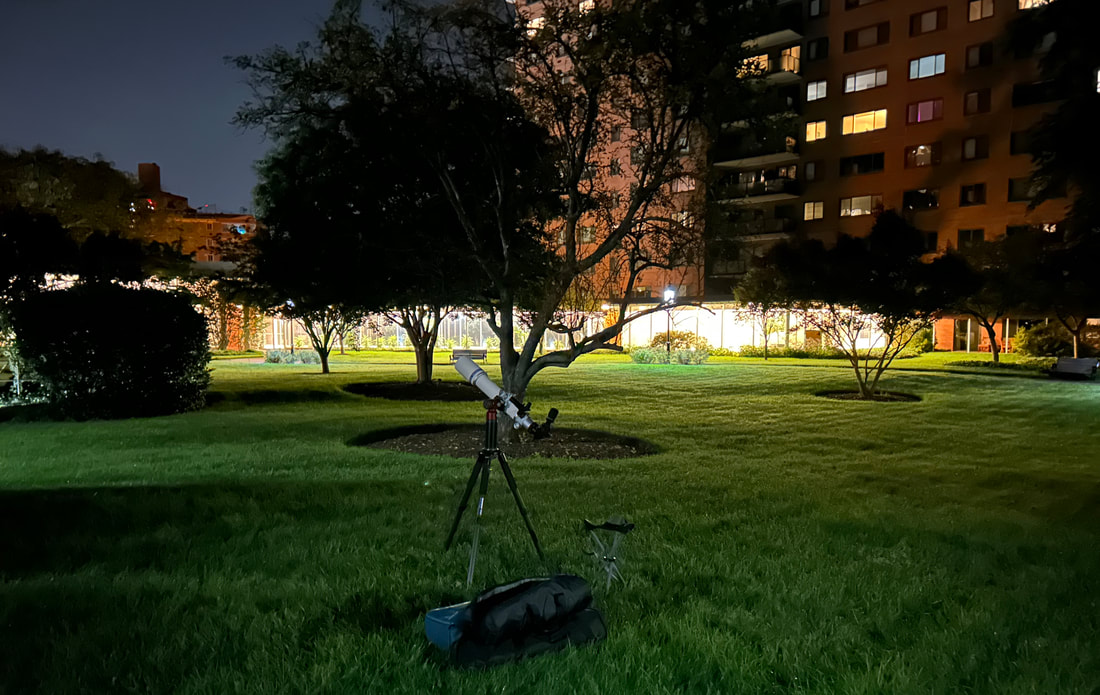
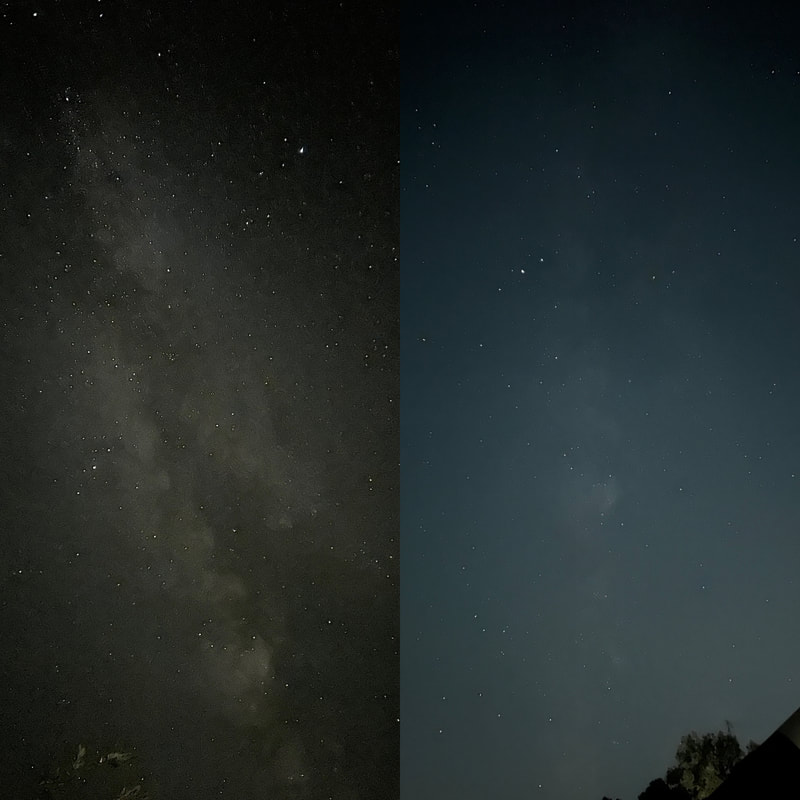
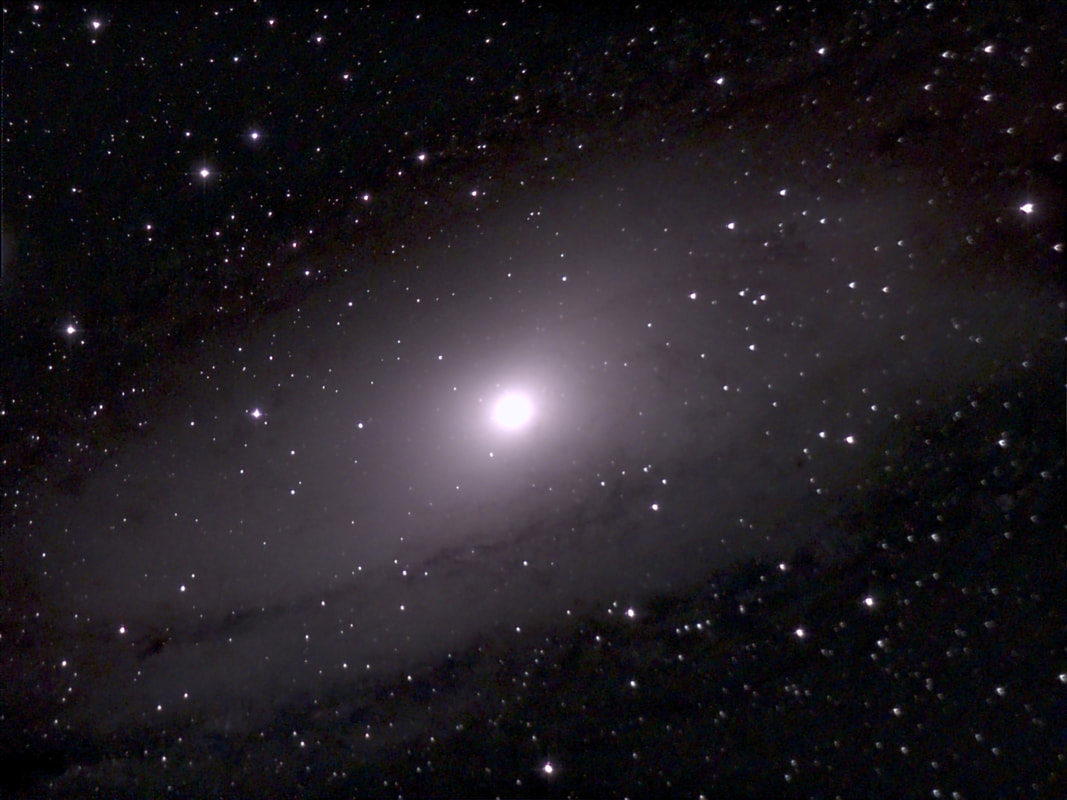
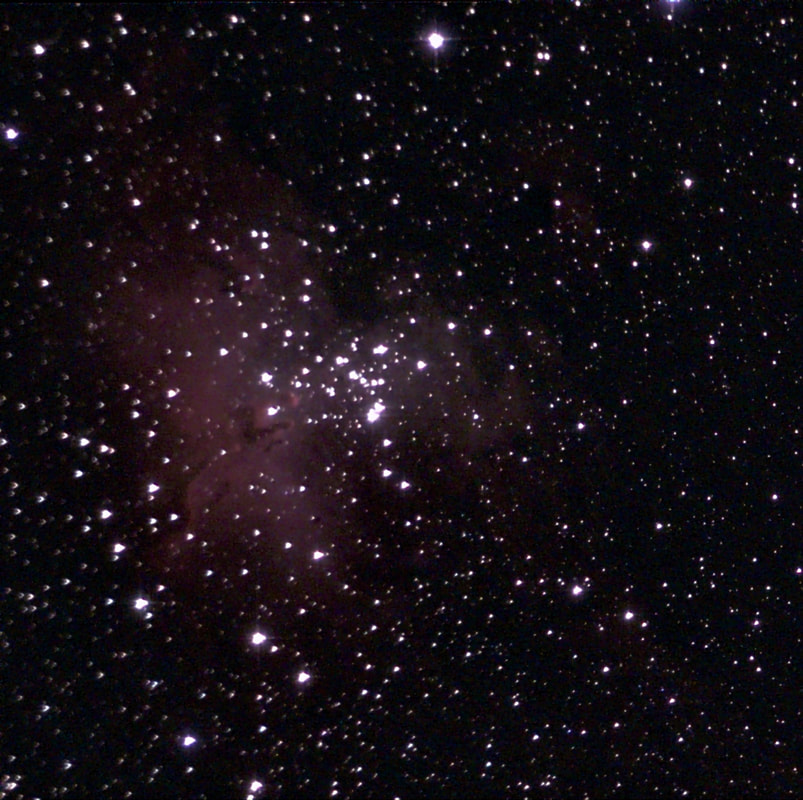
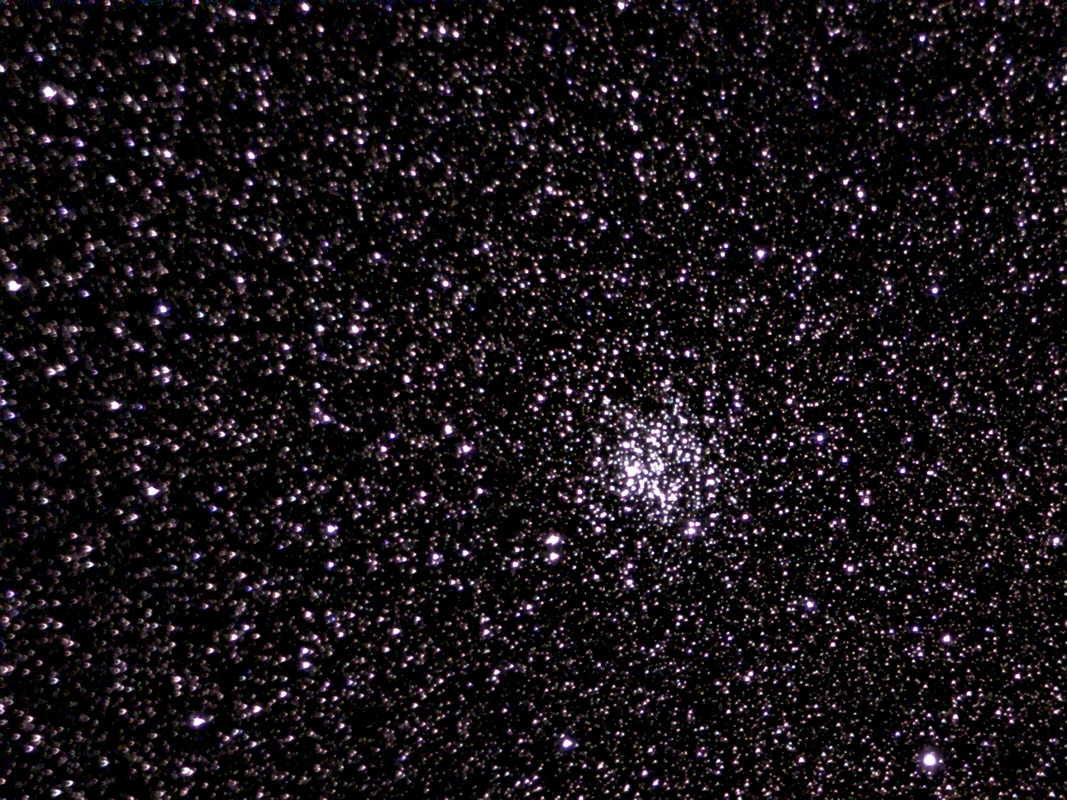
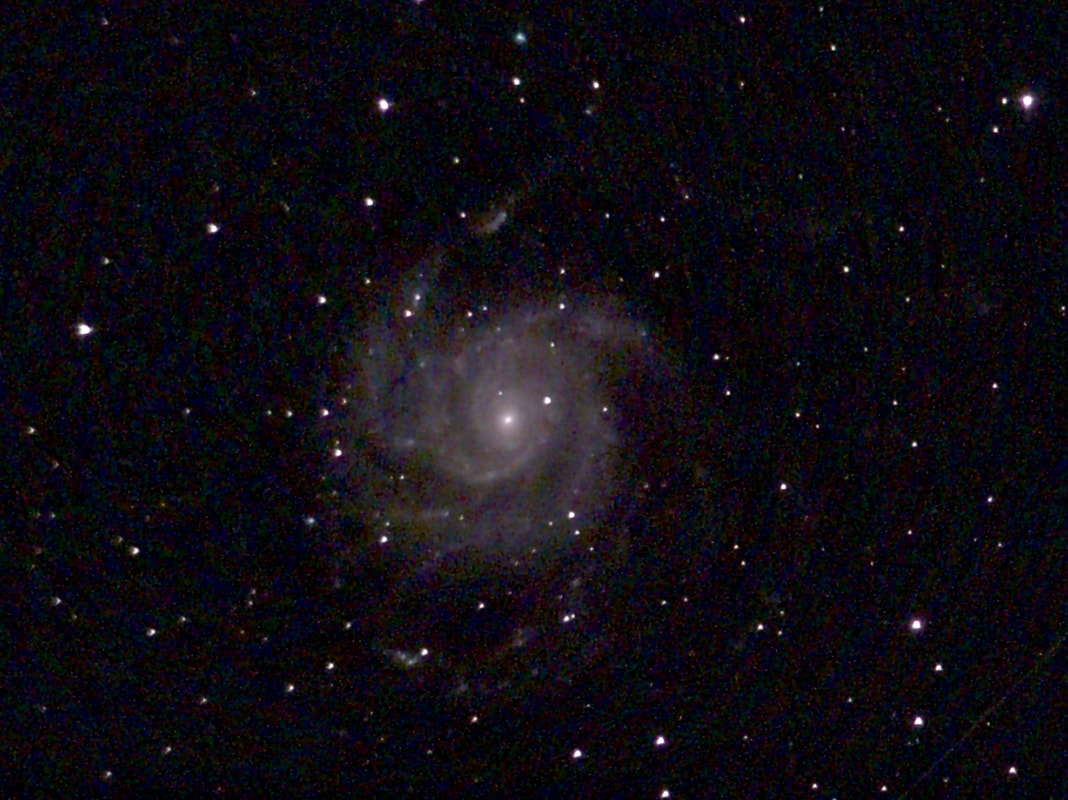
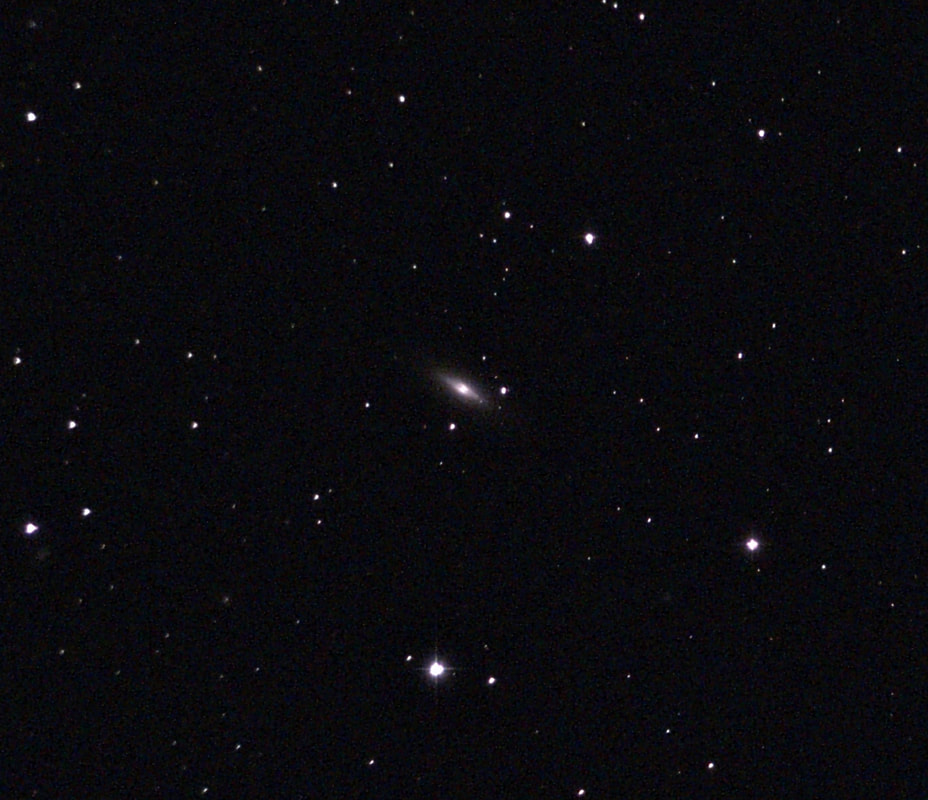
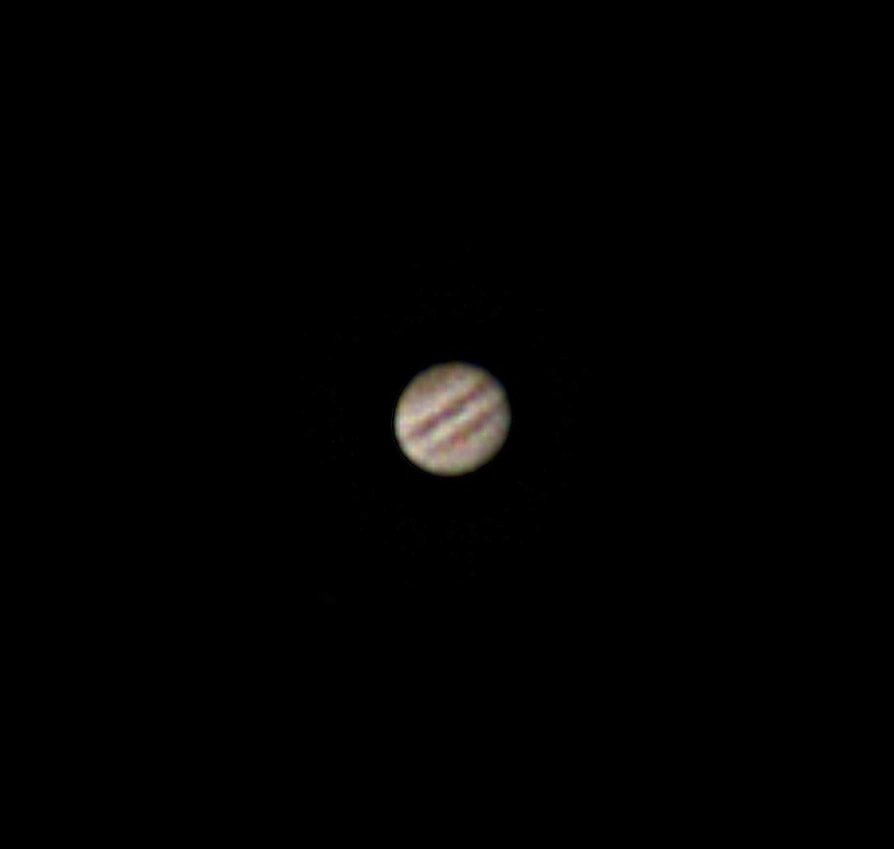
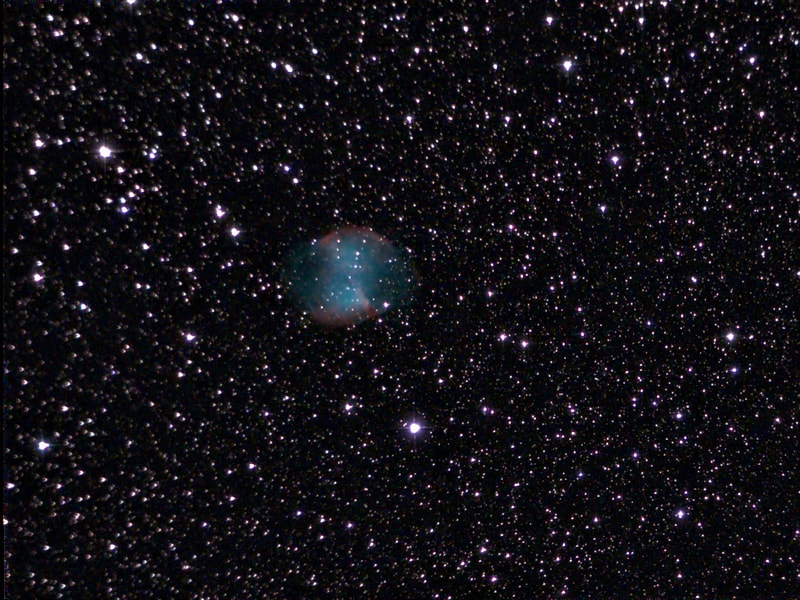
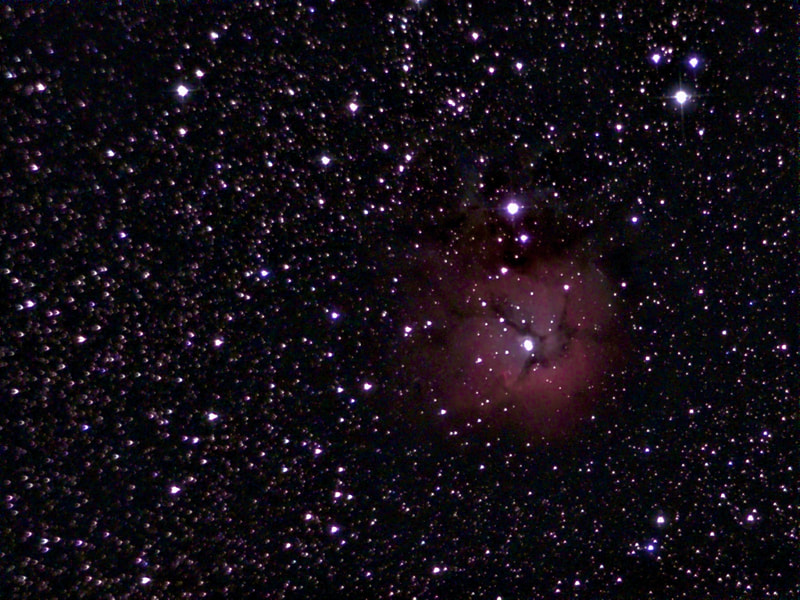
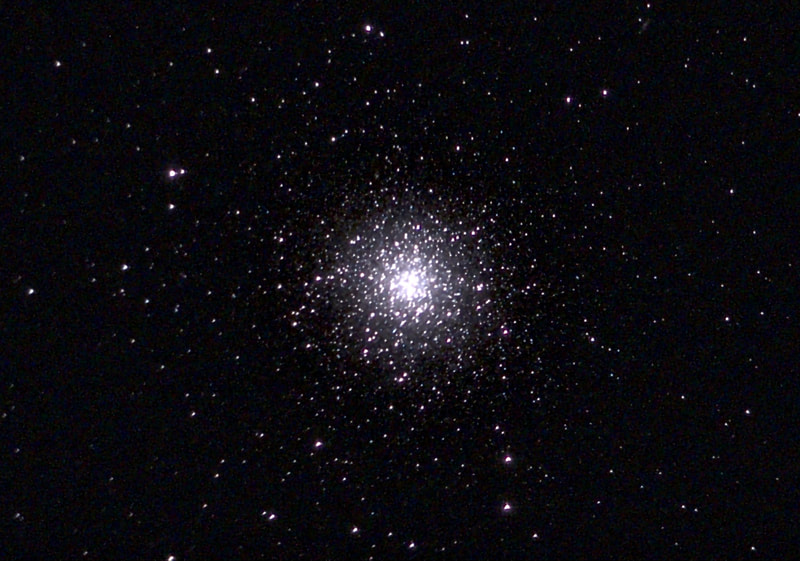
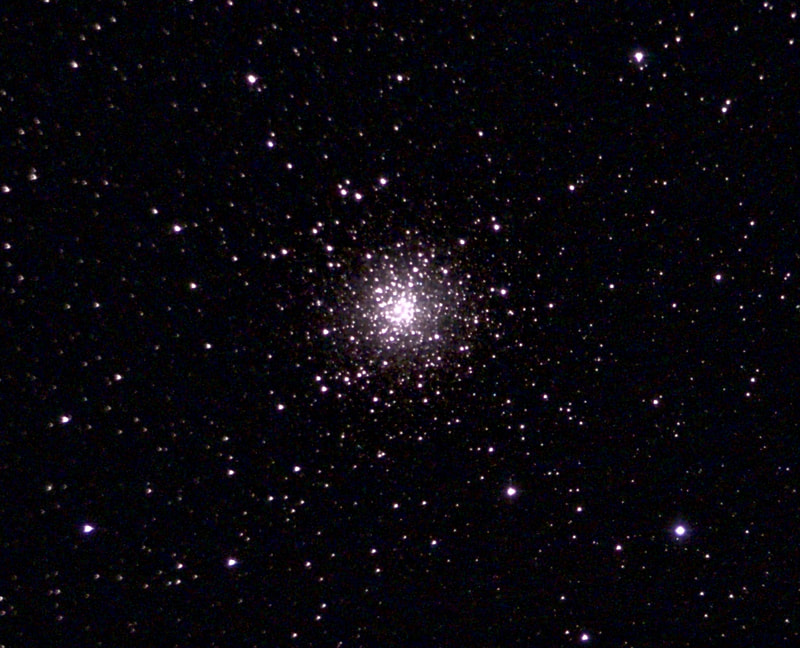

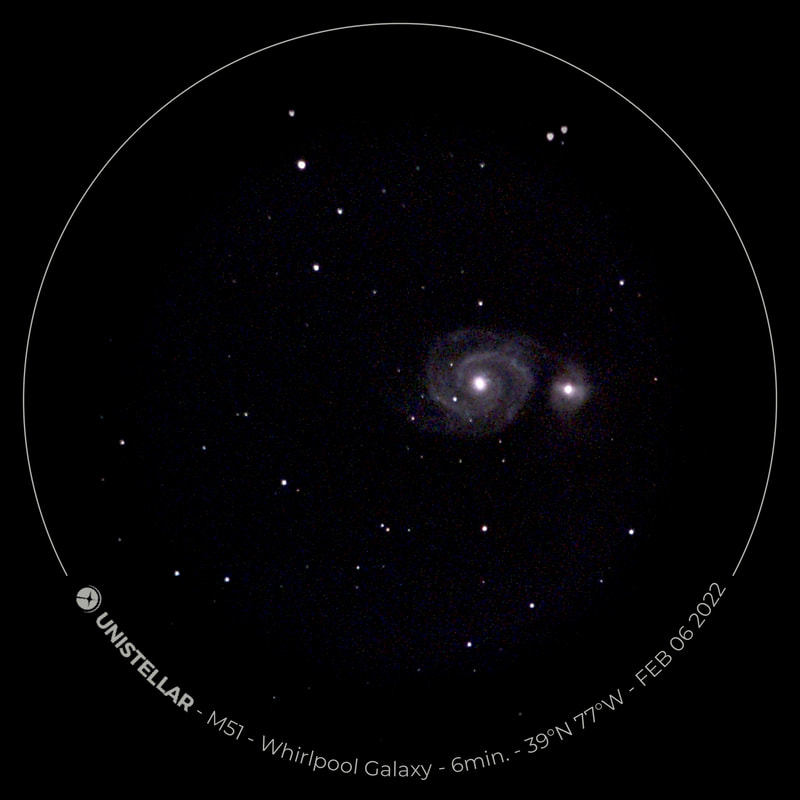
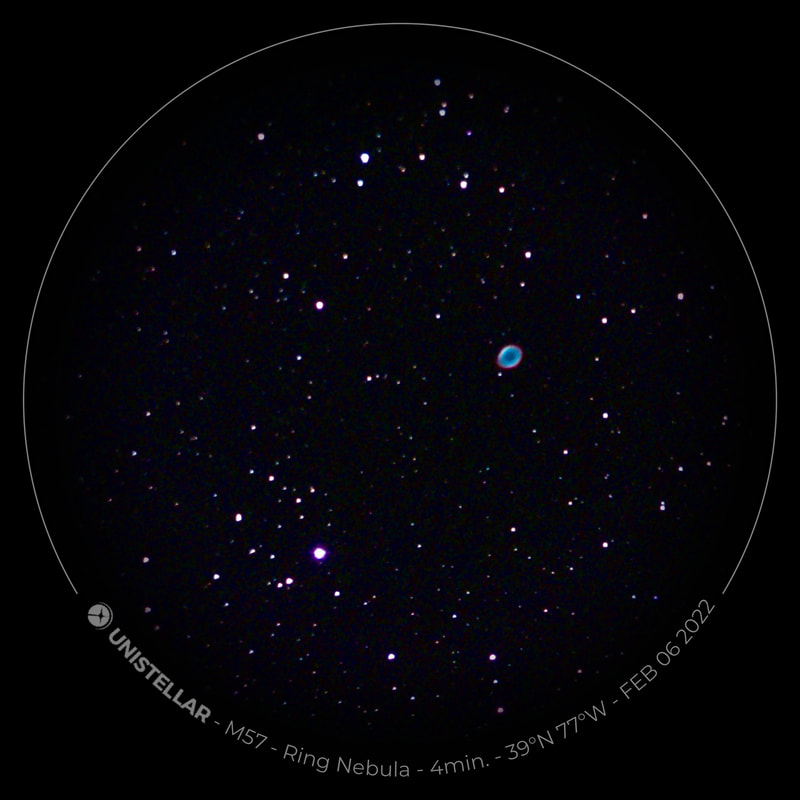
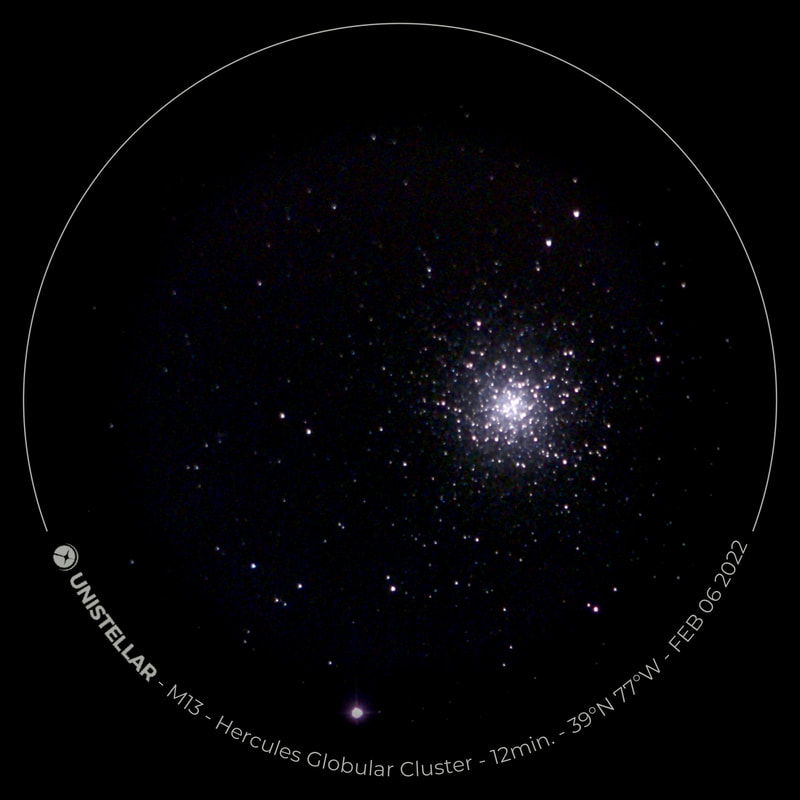
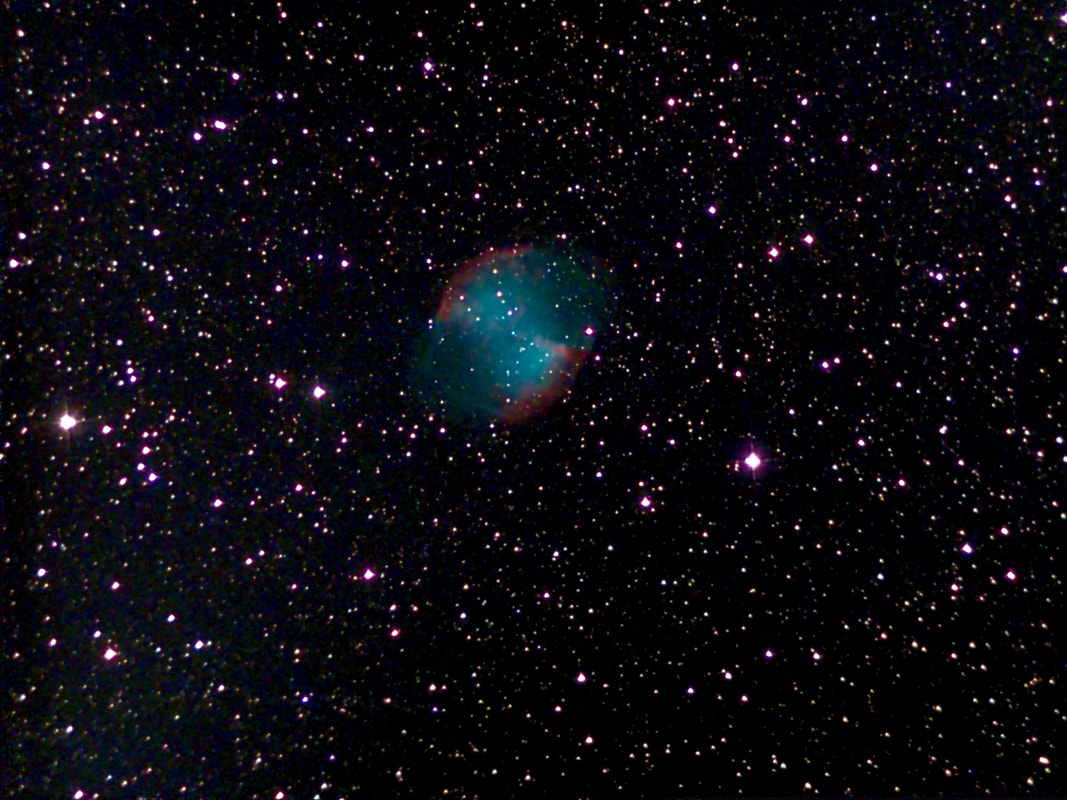
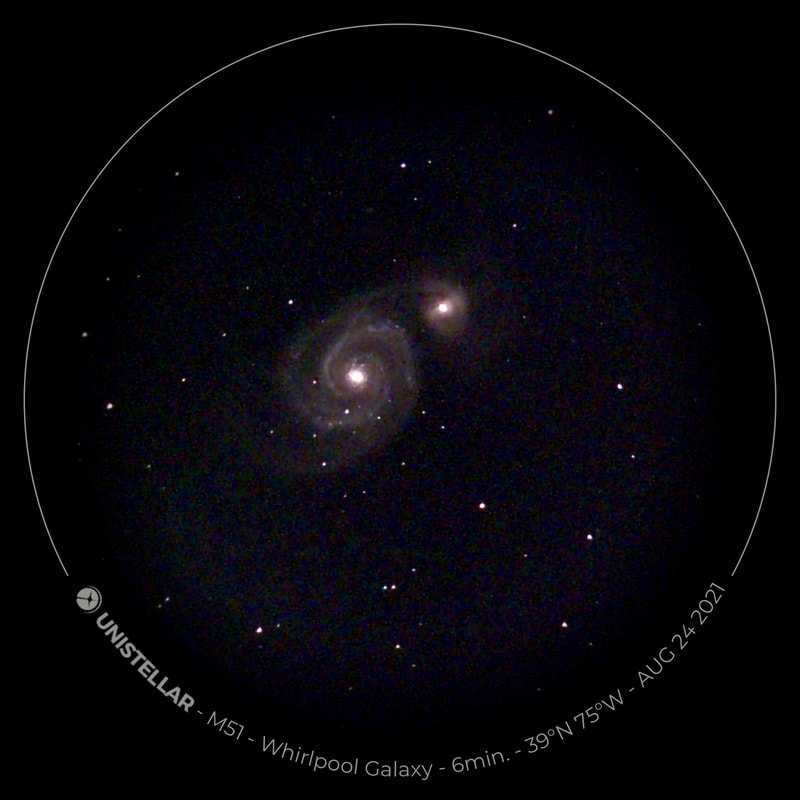
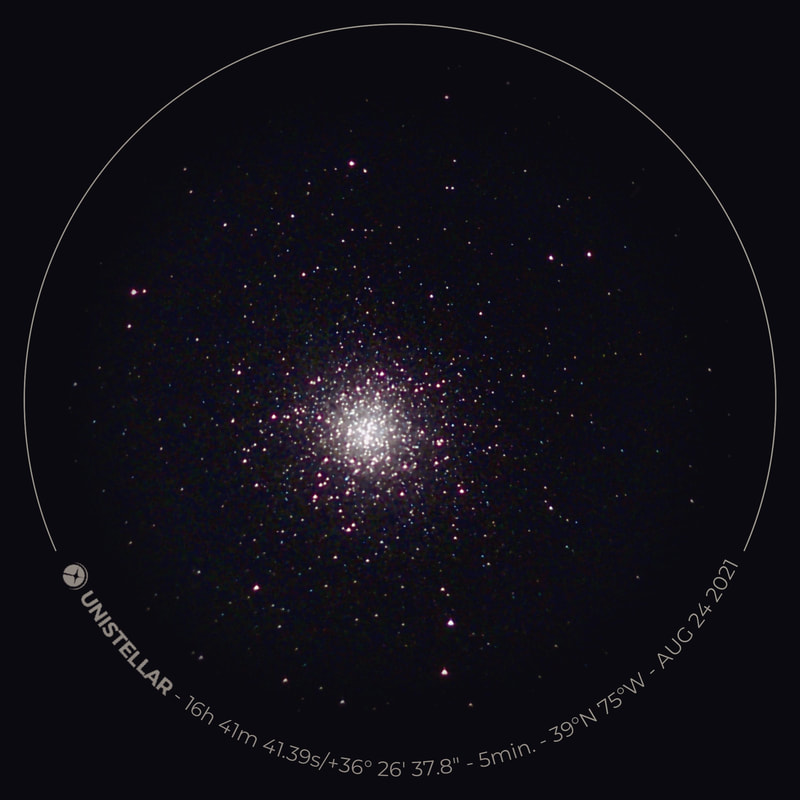
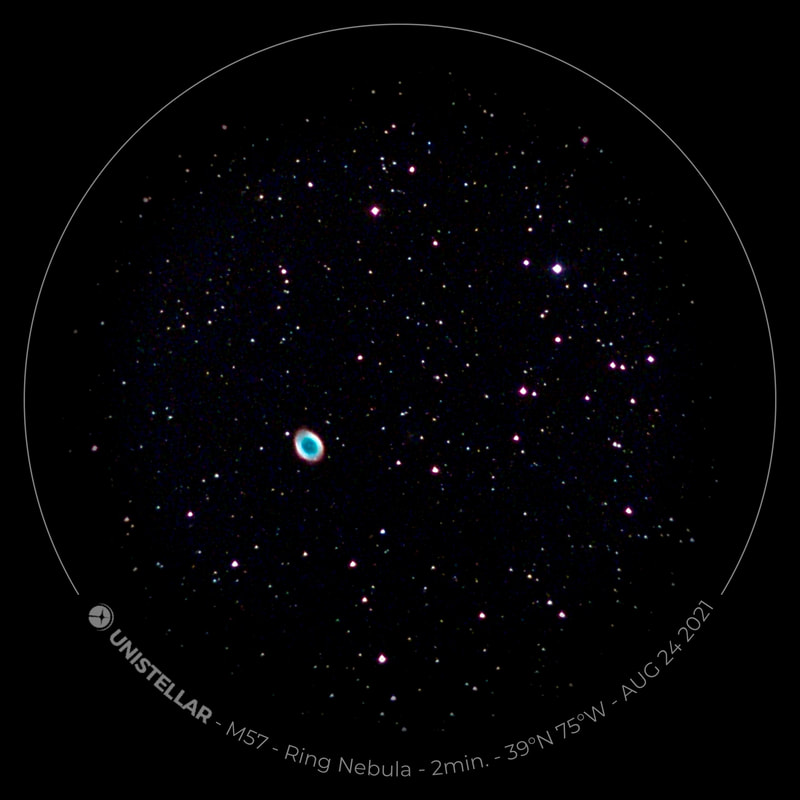
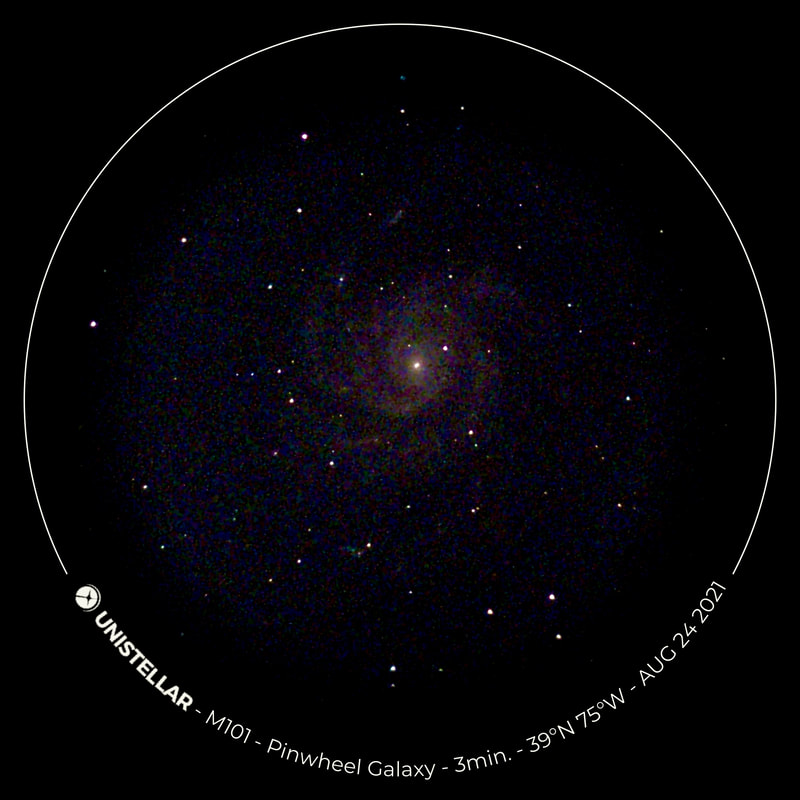
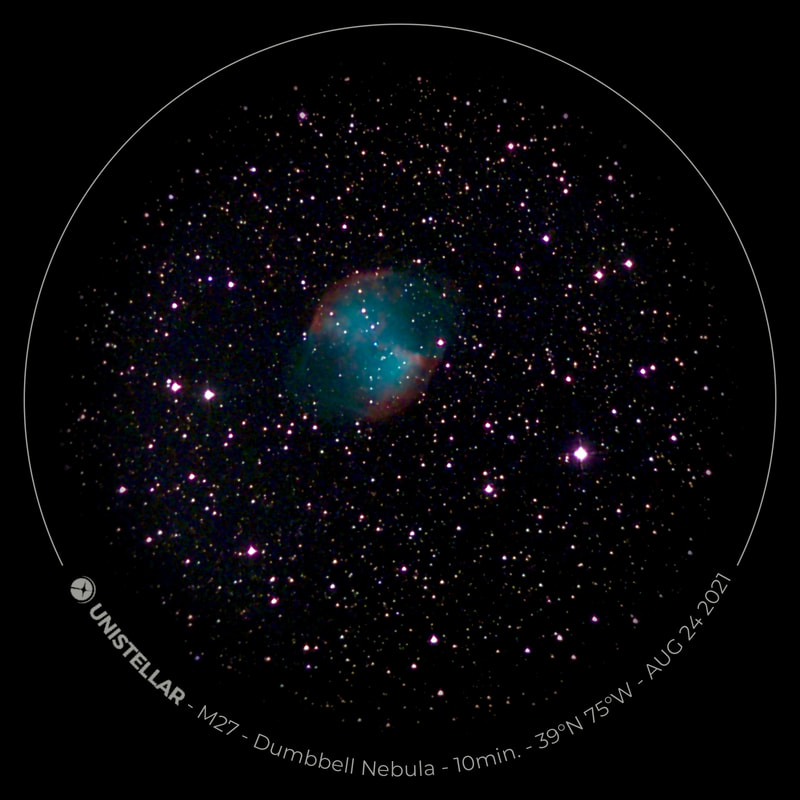
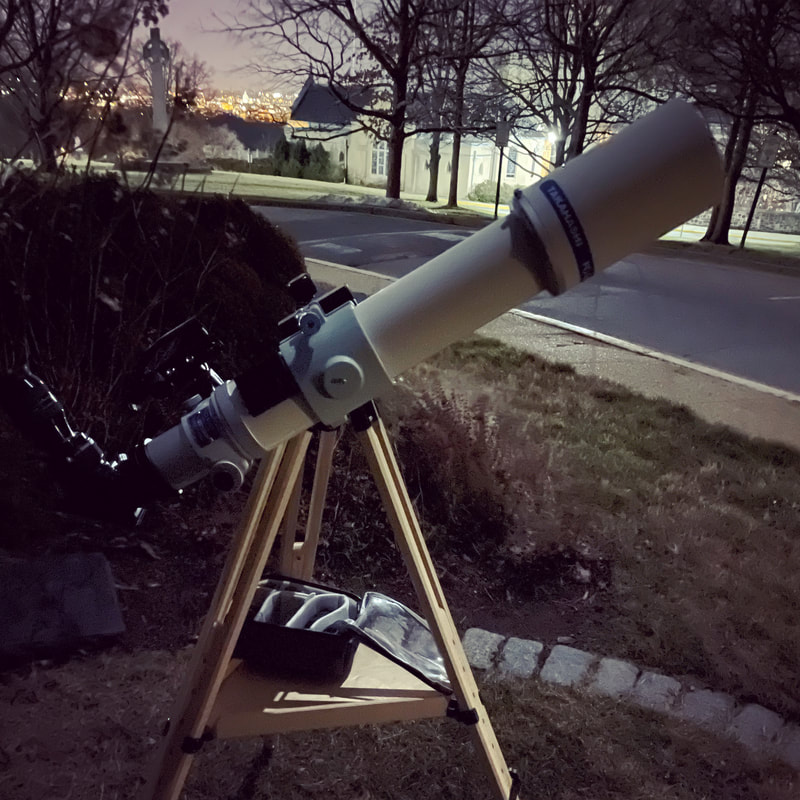
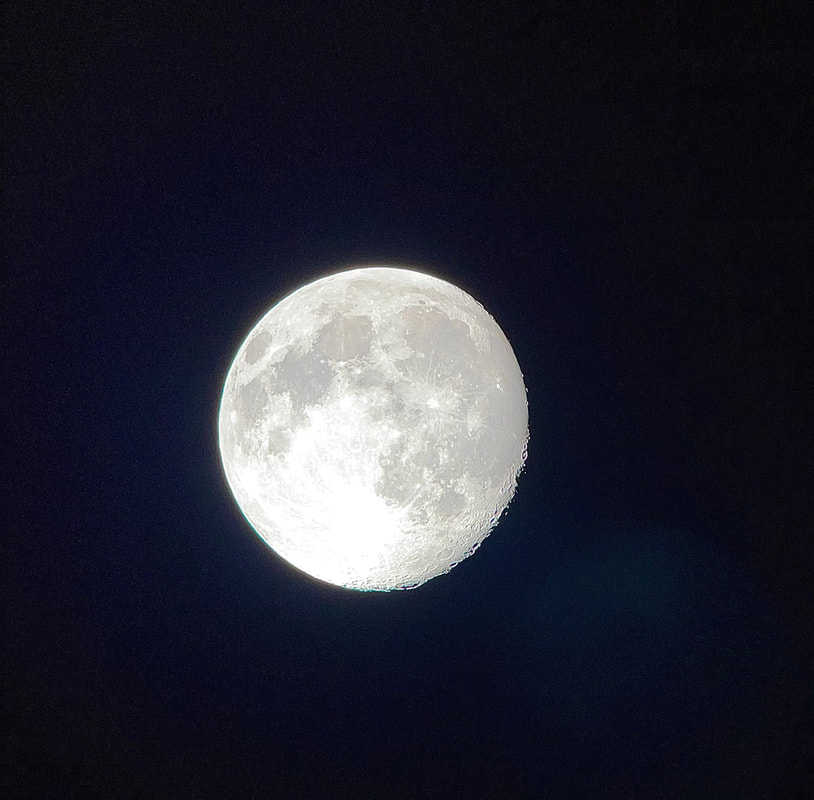
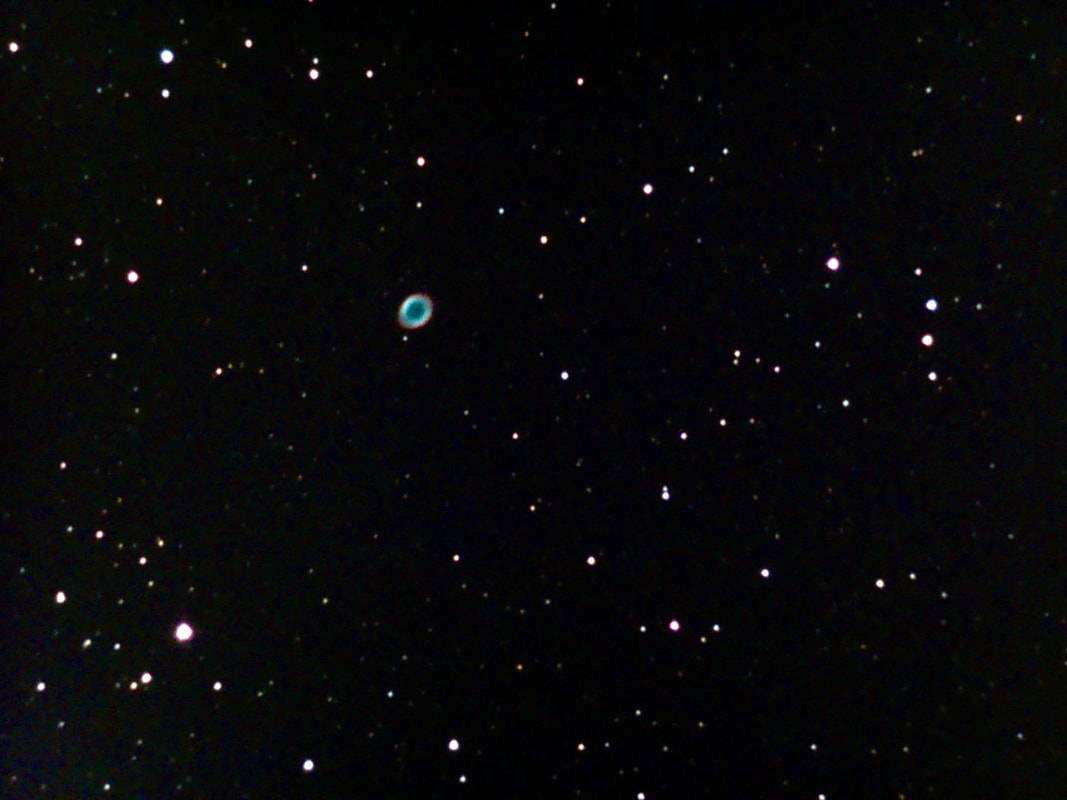
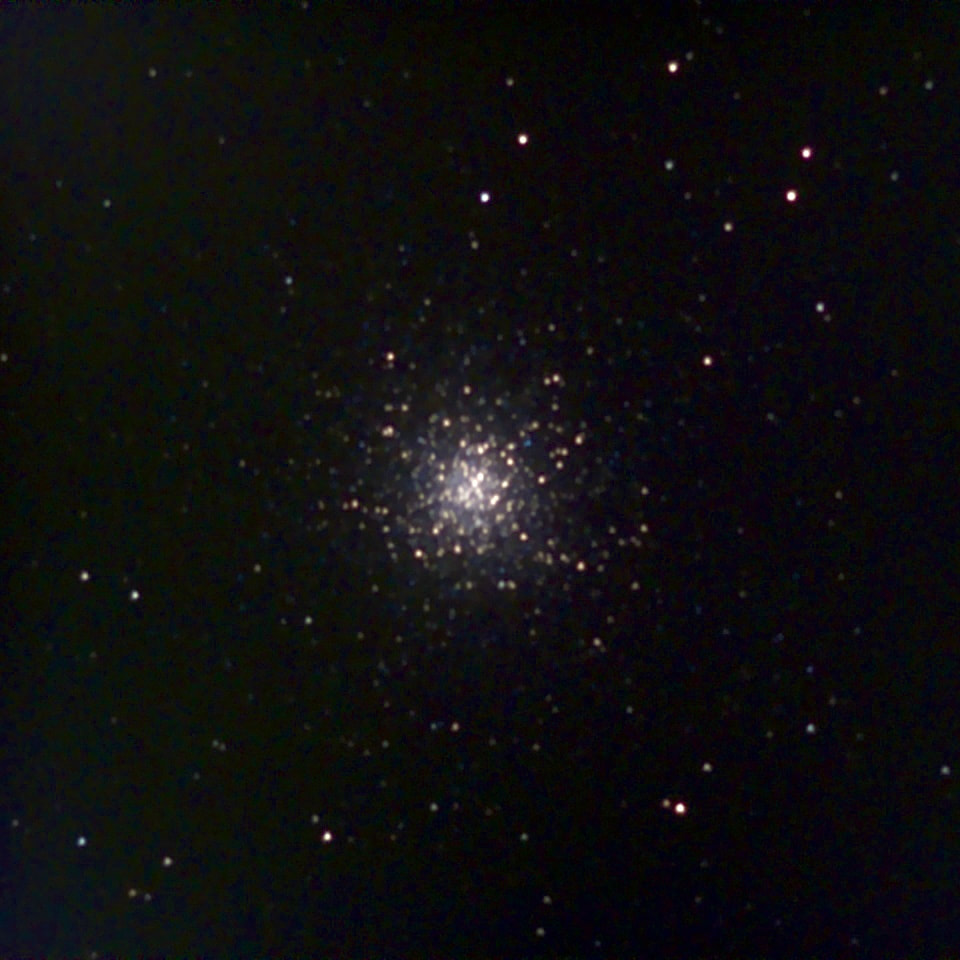
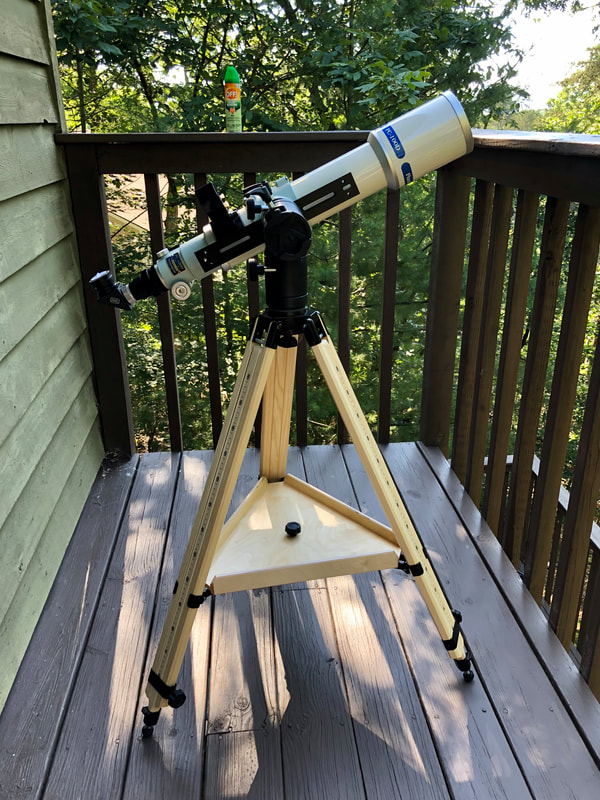
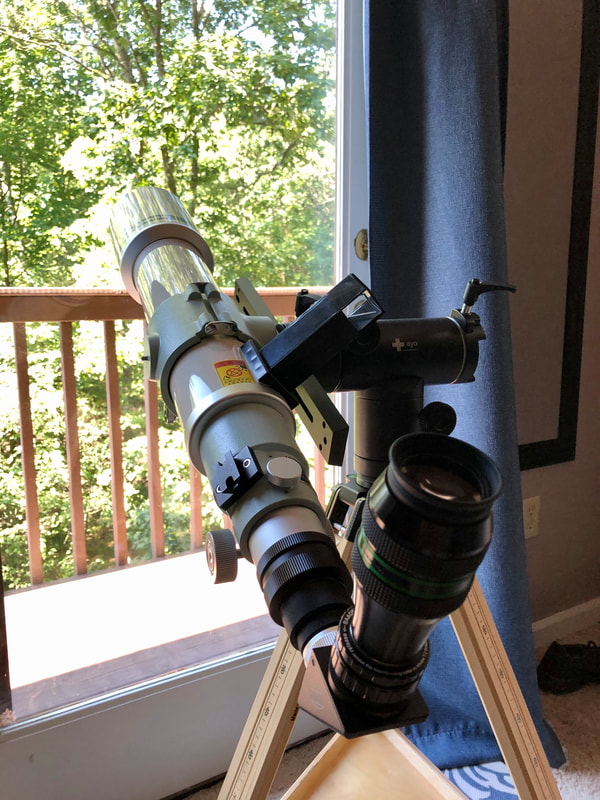
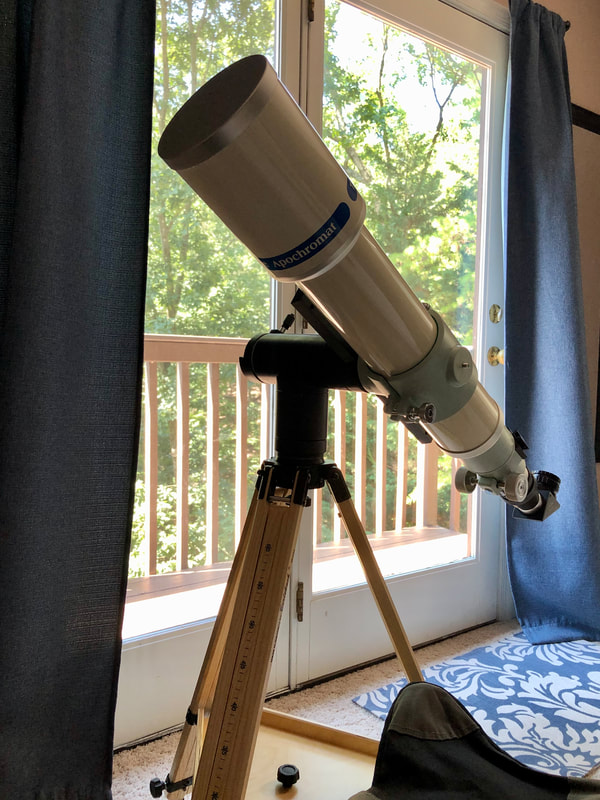
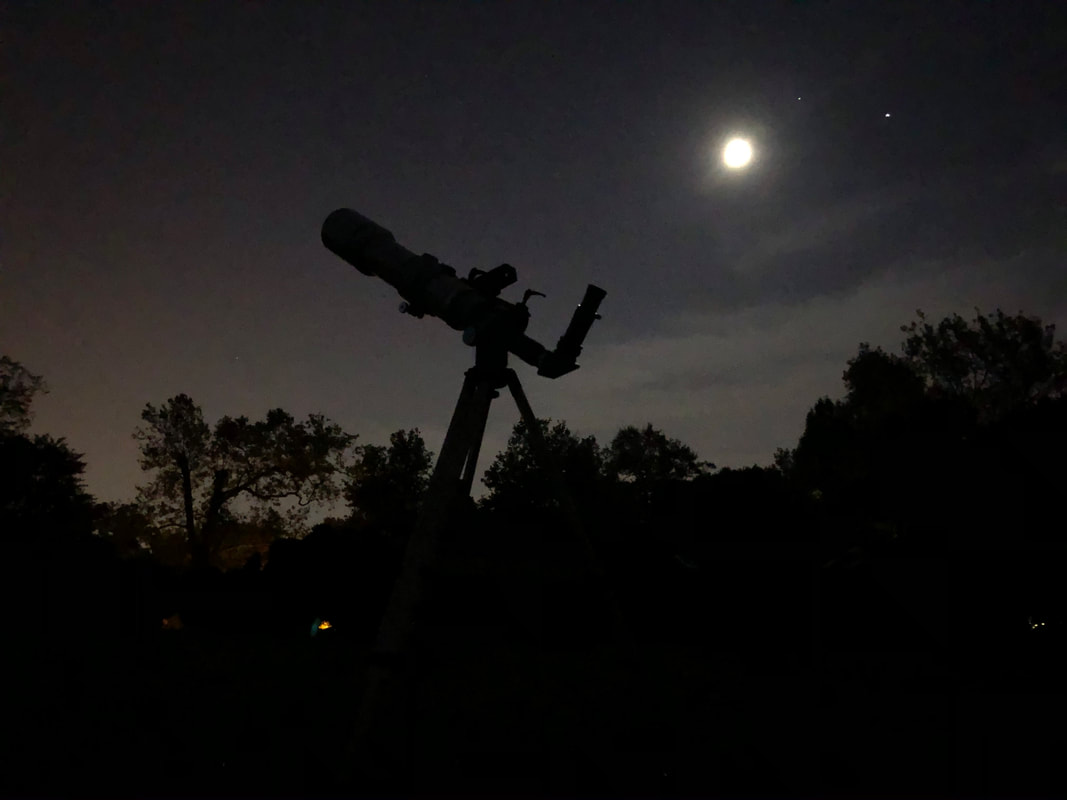
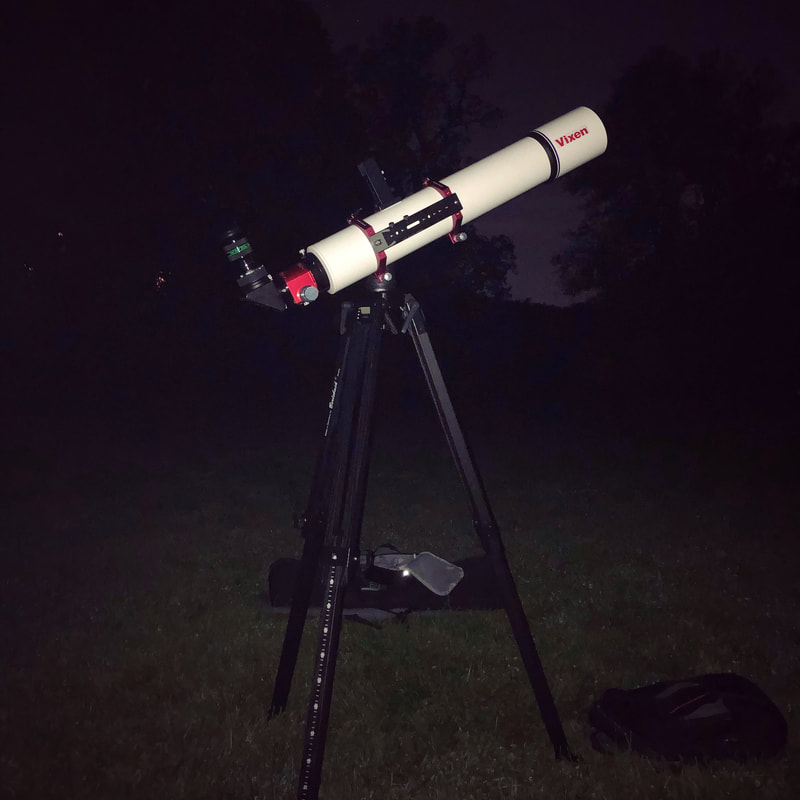
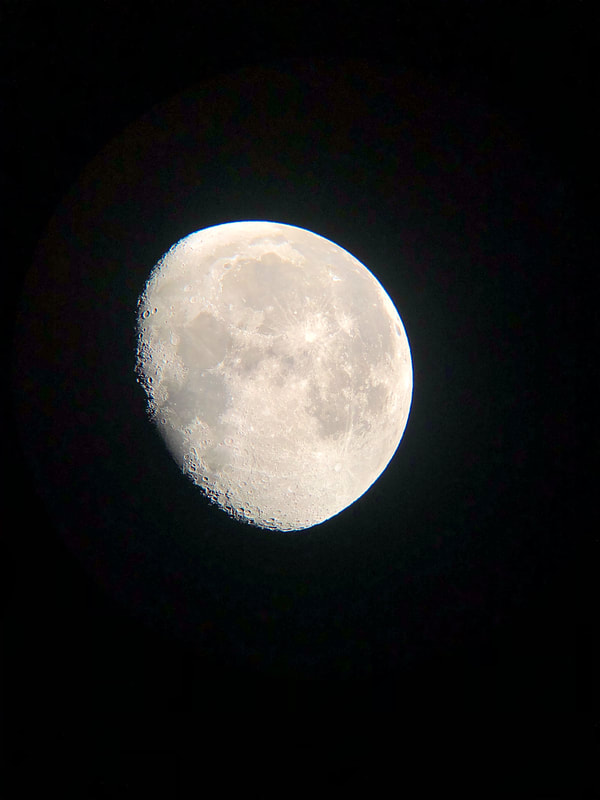
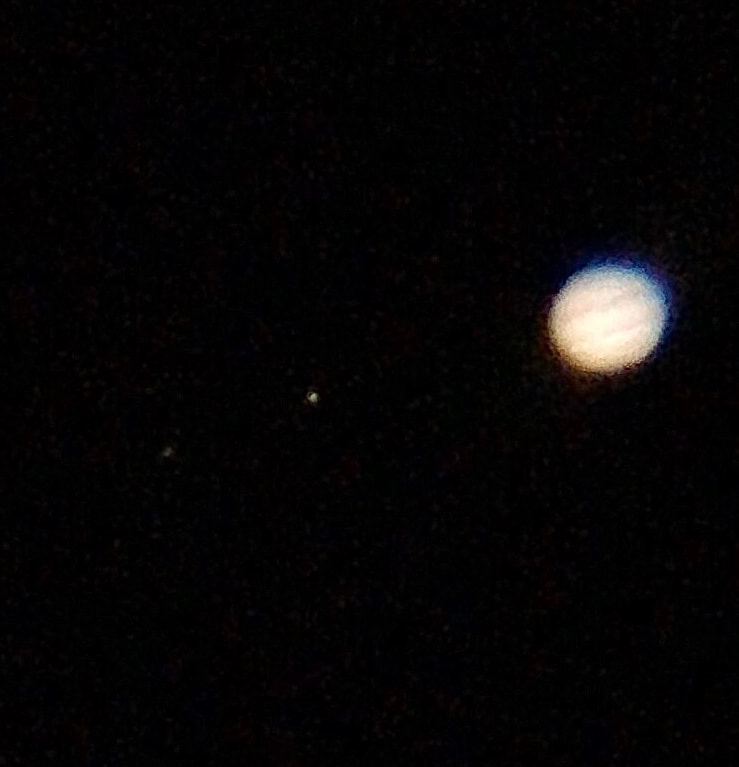
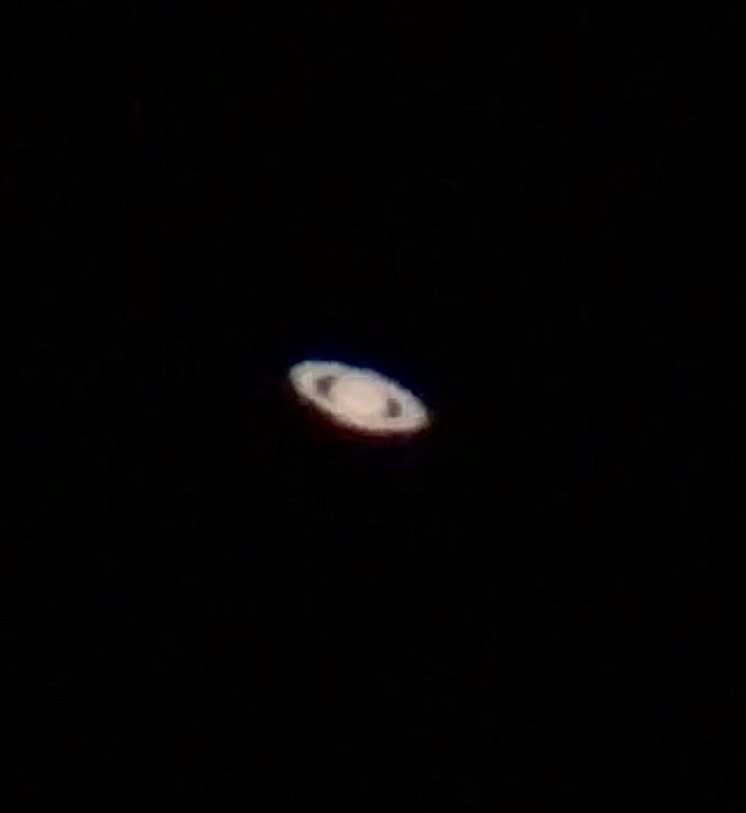
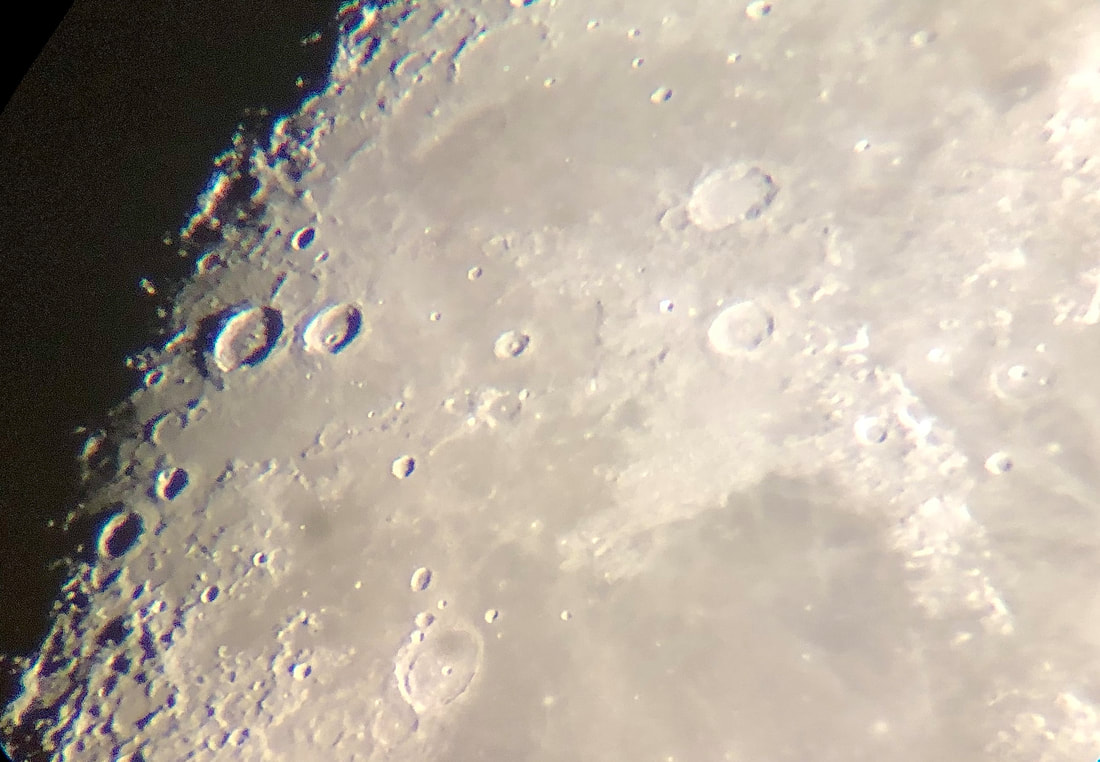
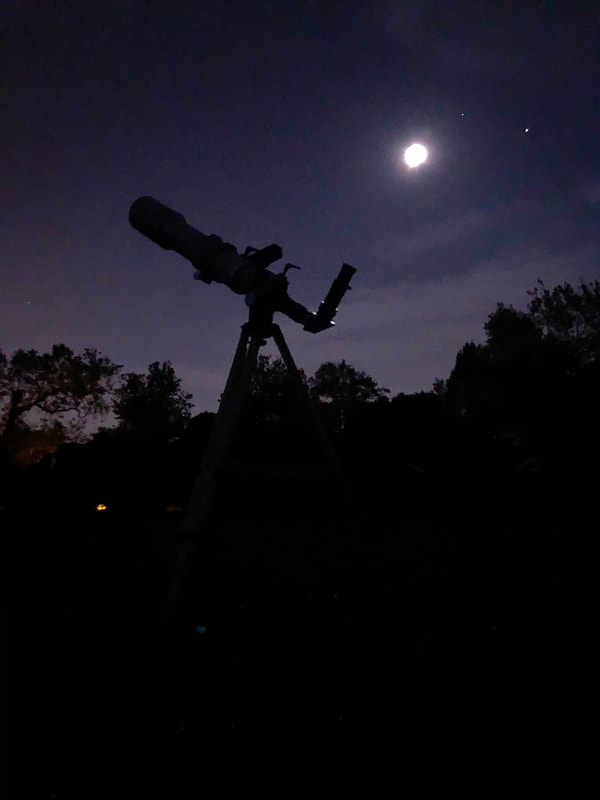
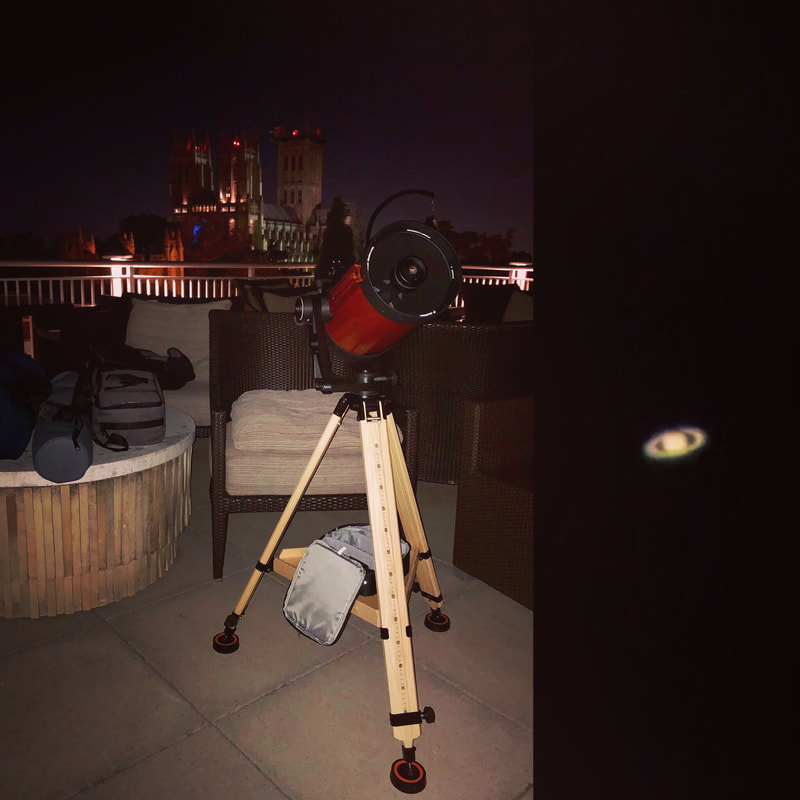
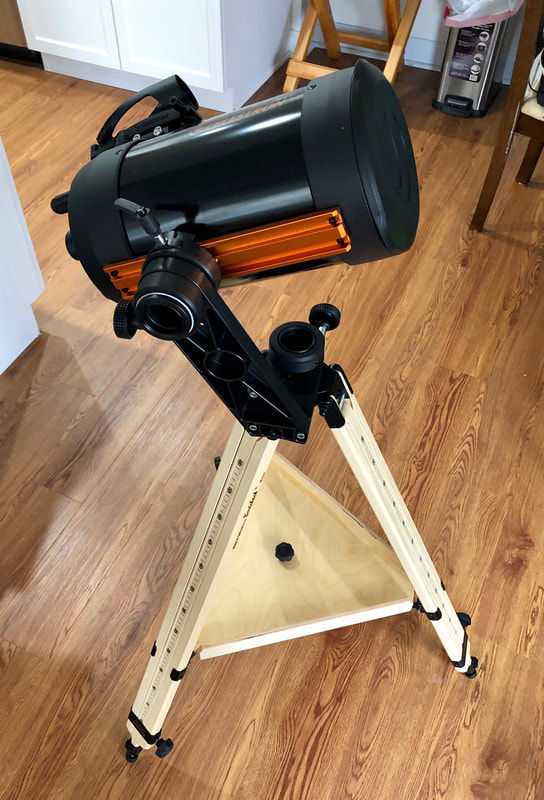
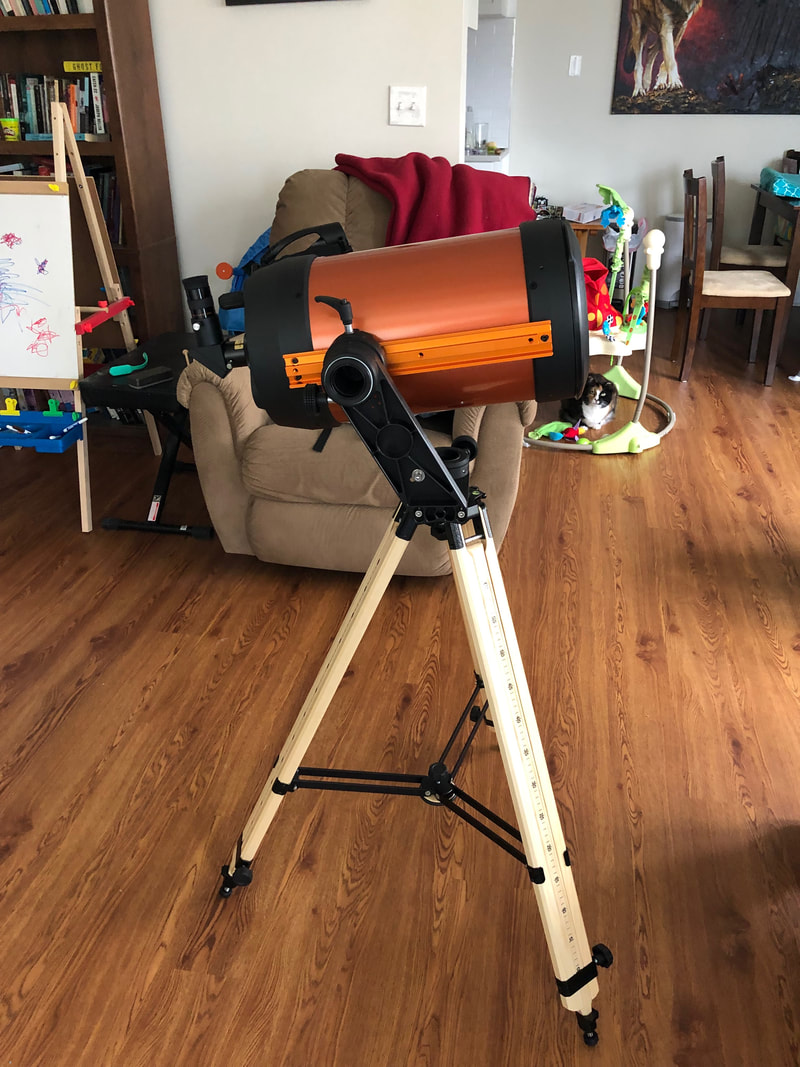
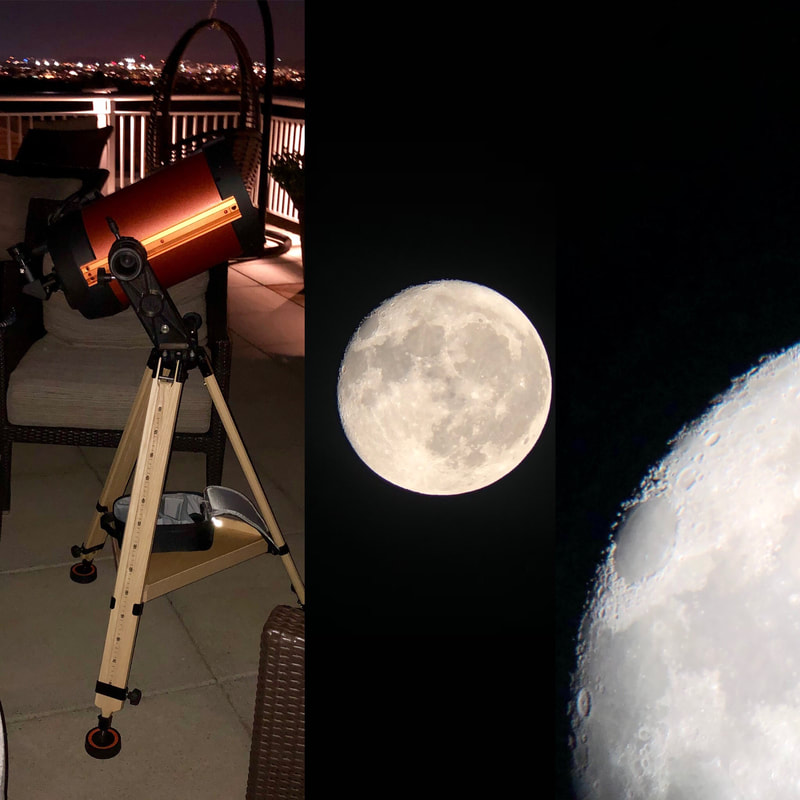

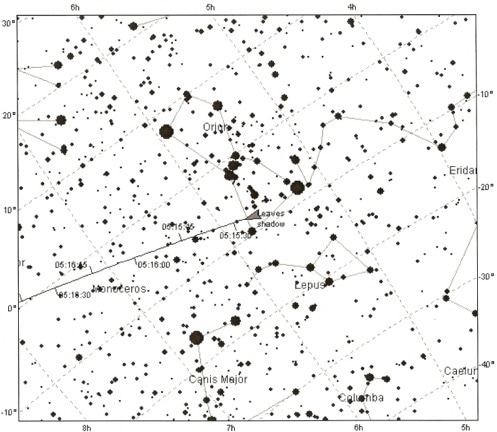
 RSS Feed
RSS Feed